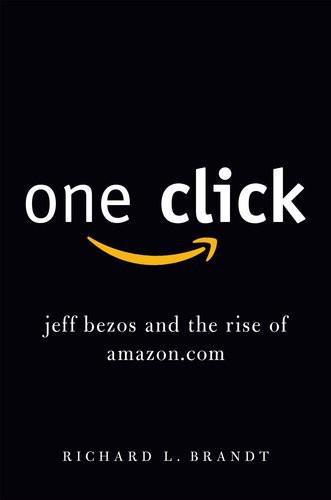
One Click: Jeff Bezos and the Rise of Amazon.com
by
Richard L. Brandt
Published 27 Oct 2011
Davis had aspirations to work with a start-up, however, and didn’t last long at the university. The following summer he became a programmer for the Seattle Internet company called USPAN. He created a hyperlink program (which allows Internet surfers to jump from one Internet site to another by clicking on the link) but abandoned it when he discovered the Mosaic Web browser. Mosaic was developed at the National Center for Supercomputing Applications (NCSA) at the Urbana-Champaign campus of the University of Illinois, becoming the first (and, many people still feel, the best) browser to take advantage of the newly created World Wide Web. Davis hoped to integrate his hyperlink program into that browser, and contacted Marc Andreessen, a smart computer science student at the University of Illinois who codeveloped Mosaic.
…
In 1968, Alan Kay, then at Xerox Corporation’s Palo Alto Research Center, conceived of the Dynabook, a graphics-based portable computer (a concept which Steve Jobs later borrowed to create the Macintosh). But Kay also saw the device as an e-book, a way to download and carry around digitized books. That meant people would have to have access to digitized books. So in 1971, Michael Hart, a student at the University of Illinois, Champaign-Urbana (where the Mosaic Web browser was later invented), started Project Gutenberg, the first project to digitize and archive written works, mostly books in the public domain. The project now has some thirty-five thousand works in its archive. The effort was an attempt “to encourage the creation and distribution of eBooks.” In the 1990s, companies started offering e-book devices in earnest.

HTML5 for Web Designers
by
Jeremy Keith
Published 2 Jan 2010
From IETF to W3C: The Road to HTML 4 There was never any such thing as HTML 1. The first official specification was HTML 2.0, published by the IETF, the Internet Engineering Task Force. Many of the features in this specification were driven by existing implementations. For example, the market-leading Mosaic web browser of 1994 already provided a way for authors to embed images in their documents using an <img> tag. The img element later appeared in the HTML 2.0 specification. The role of the IETF was superceded by the W3C, the World Wide Web Consortium, where subsequent iterations of the HTML standard have been published at http://www.w3.org.
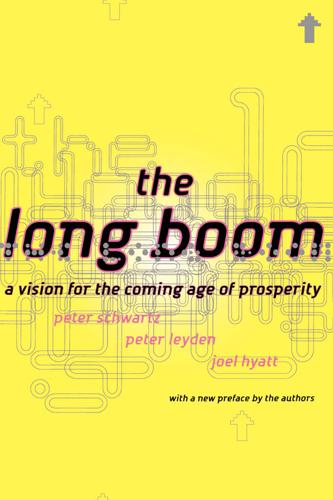
The Long Boom: A Vision for the Coming Age of Prosperity
by
Peter Schwartz
,
Peter Leyden
and
Joel Hyatt
Published 18 Oct 2000
You can track the number of microprocessors sold, the feet of fiber-optic cable laid, the rise in cell phone subscriptions, the explosion in Web sites—anything to do with these fields has taken off since 1990. The number of Internet hosts, or servers, alone has been doubling almost every year since the introduction of the Mosaic Web browser in 1993. By 1998 that number had passed 30 million and was continuing to climb. The number of Internet users that year topped 160 million. Personal computers have saturated the business world, have moved from business into the home, and have begun spreading from the developed to the developing world.
…
U.S. government, 26-28 Middle class in Africa, 141 characteristics of, 230-232 emergence of global, 4, 209, 227, 229-232 environmental awareness of, 161-162 future for women in, 246-250 of India Middle Eastern, 139-140 nanotechnology and, 209 opportunities for women in, 241-246 plane travel and, 235-236 331 television and, 232-234 in U.S., 242 World Wide Web and, 234-235 Middle East New Economy in, 8, 137-140 oil supplies, 161, 163 predictions about, 165-169 television watching in, 233 Milan, 257 Military strategy, 133-134, 292 Millenial anxiety, 51-55 Minneapolis, 82 Mir space station, 222 Misery index, 16 Mississippi River, 150 Mitchell, Anthony, 117 Mitsubishi, 178 Miyazawa, Klichi, 122 Mobile phones, 16 Mobil Oil, 60 Moderation, 231-232 Modernization, 138 Mohamad, Prime Minister Mahathir, 116 Montana, 235 Moon, 223-225, 281 Moore, Gordon, 20, 221 Moore's law, 20 Morgan, J.P., 72 Mosaic Web browser, 23 MTV, 233 Mullis, Kary, 18—8-189 Murdoch, Rupert, 233 Nanotechnology defined, 3 origins of, 203-205 predictions about, 185-186, 190, 206-209 NASA, 159, 218 NASA's Goddard Institute for Space Studies, 152 Natural gas, 166, 184 NEC, 205 Netday, 80 Netscape, 27 Network, 252 332 Networked economy, 81, 127, 252-253, 271-272 Networking computers advent of, 22 Internet and, 22-23,190 New Economy and, 127 predictions about, 190 Silicon Valley vs.

The Internet Is Not the Answer
by
Andrew Keen
Published 5 Jan 2015
What’s making its way to us, however, is more than just an image of an Uber limousine blinking across our mobile screen. It’s the creative destruction inflicted by distributed capitalist networks like Uber or Airbnb, in which anyone can become a cabdriver or a hotelier. And Marc Andreessen—whose Mosaic Web browser opened the Internet’s moneyed second act—is right. Uber is certainly going to be a “killer experience” for its early investors, who stand to make 2,000 times their initial outlay.120 But while a lucky handful of investors turned $20,000 angel investments in Uber into $40 million fortunes, the consequences of this casino-style economy are much more troubling for the rest of us.
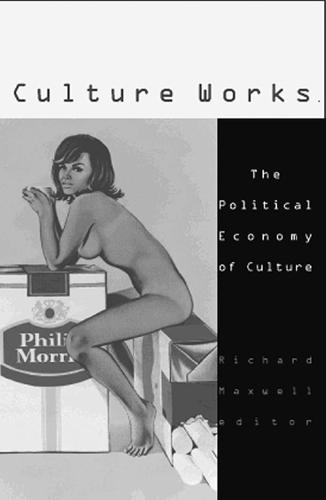
Culture works: the political economy of culture
by
Richard Maxwell
Published 15 Jan 2001
Similarly, the two critical inventions that led to the World Wide Web were funded with public money, and remained common property. The first was hypertext transfer protocol (http), developed in 1989 at the European Laboratory for Particle Physics, which created a common language for transmitting information over the Web. The second was Mosaic, the first graphical Web browser, developed in 1993 at the University of Illinois’s National Center for Supercomputing Applications. Mosaic, which became the basis for Netscape, popularized the Web by offering users an easier, more navigable interface. Public investment in research and development and infrastructure continued to permeate the first stage of the Internet’s spread to university, government, and corporate users.
…
See also Surveillance Marlboro, 37, 100 Marshall Field, 167 Martin, Randy, 155 Martorella, Rosanne, 44 Mass media, 68–78, 135–54, 164, 182–84, 204–6, 217 Maxwell, Richard, 1–21, 211, 218 McAllister, Matthew, 71–72, 80 McChesney, Robert W., 20, 220, 245 McDonald’s, 76 Meaning, 20, 22, 36, 50, 69, 72–77, 80, 88, 95, 108, 110, 113, 125, 150, 187, 228 Media, the: definition, 226 Media One, 207 Meehan, Eileen, 218 Mental labor, 12–15 Metropolitan Museum of Art, 48, 50 Mexico, 44, 64, 175–76, 184 Mickey Mouse, 234 Index Microsoft, 205–10, 219, 239–45; antitrust trial, 206 Miege, Bernard, 210, 218 Military, the, 25–26, 97, 199–200 Miller, Toby, 155 Minow, Newton, 230 Mobil, 42 Monday Night Football, 60, 138–39 Montgomery Ward, 168 Moore, Michael, 232, 238 Mosaic (Web browser), 201 Mosco, Vincent, 20, 217 Moyers, Bill, 227 Ms. (magazine), 245 MTV, 112, 117–18, 136, 183, 228; MTV Brasil, 115; MTV India, 120 Mulcahy, Kevin V., 26, 53 Murdoch, Rupert, 18, 140–47 Museum of Modern Art, 27–30, 32, 35, 42, 50; International Council, 28 Music, 3, 6, 11, 62, 68, 70, 107–19, 123–28, 181–83, 198, 228, 233 Nader, Ralph, 99 Narrative, 2, 8, 18, 148–49, 151–53, 240 National Association of Stock Car Auto Racing (NASCAR), 70 National Basketball Association (NBA), 69, 137–38, 143 National Broadcasting Corporation (NBC), 95, 136–39, 143, 147, 154, 206, 210, 232–35 National Center for Supercomputing Applications, 201 National Endowment for the Arts (NEA), 40–48 National Football Conference (NFC), 136, 142–43 National Football League (NFL), 67, 142 National Hockey League (NHL), 67, 138, 143 National Labor Committee (NLC), 176, 190 National League of Women Voters, 90 National Rifle Association (NRA), 67 Native Americans, 5, 8 Neoliberalism, 8, 13, 47, 71, 90, 111, 133, 149, 165, 175, 219, 226, 230, 233–35, 242 Neo-networks, 17, 225; as business strategy, 231 Netscape, 201, 206, 209, 219, 239–40 New Deal, 25, 170 News Corporation, 132, 136, 140–46, 203 Newspapers, 36, 71, 100, 131–32, 140–41, 167, 198 Newsweek, 226 New York Knicks, 144 New York Times Magazine, 13 Nigeria, 44 Nike, 76, 86, 135, 176, 190 Nixon, Richard, 41–43 North American Free Trade Agreement (NAFTA), 175 NSFNET, 200–201 Obscenity, 46 Office of the Coordinator of InterAmerican Affairs, 27 Oligopoly, 85–88, 225, 234 Olympic Games, 18, 67, 132, 137–38, 140, 147–54 Ontario Mills Mall, 182 Op art, 31, 34–40 Open Software movement (open source movement), 239–42 Oprah Olympics, 149 O Tchán, 111 Packer, Kerry, 144 Paramount Pictures, 136, 183, 229, 231, 233 Pease, Otis, 96 PepsiCo, 42, 76, 120, 136 Philip Morris, 31–40, 49, 86 Philippines, the, 65 Poland, 175 Political economy: definitions, 4–10; and environment/environmentalism, 9, 11, 16, 18–19, 33, 43, 46, 50, 66, 73, 101, 169, 172, 174–75, 182, 185, 188–90, 202, 215, 219, 228, 237, 244–45; ethical dimension, 8–10, 13, 19, 42, 46, 49, 65, 66, 71–72, 75, 77–78, 165, 227, 244; and gender, 10, 90, 99, 139, 149–54, 187, 243, 245; narratives and counternarratives, 6–9; and postcolonial criticism, 8; post–World War II, 23, 25, 44, 133–34, 164, 170–73; and race, 65, 172, 202, 226; spatial aspects, 2, 18–19, 43, 141, 163–91 Politics, 3–4, 7–8, 13, 16, 20, 48–50, 60, 63, 65, 77, 110, 155, 218–20, 225, 227, 238, 243–44 257 Index Politics of writing, 4, 20 Pollitt, Katha, 226 Pop art, 31, 34–40 Poppin’ the Cootchie, 112–14 Portals, 208–18 Post-Fordism, 1, 211, 214; and sport, 147 Power, 2, 3, 8, 13, 15, 19, 23–28, 33, 45–46, 49–52, 60–65, 69–71, 77–78, 93, 96, 99, 108–11, 119, 121, 125–27, 133, 142, 167, 179, 198, 203–6, 225–27, 230, 240, 243–45 Privacy, 219–20 Private property, 5, 7, 8, 15, 17; narrative and counter-narratives, 5–10 Privatization, 15, 42, 141, 189, 201, 208–18, 234, 238; of public space, 173 Procter and Gamble, 166 Prohibition, 77 Public relations (PR), 17, 24, 31, 35, 42, 83–84, 93–98, 101, 190, 215 Public service, 63, 230 Public sphere, 24, 52, 215 Puerto Rico, 15 Ramos, Mel, 31, 37 Raphael, Chad, 197–224 Rationality, 73, 151, 172, 240 Raymond, Eric S., 64, 240–41 Reagan, Ronald, 43, 46, 172, 190, 239 Real estate investment trusts (REITs), 179–80 Reality Bites, 228 Regulation, 2, 6, 30, 38, 89, 91, 96, 99, 101, 199, 228, 233–34; of advertising, 91 Relationship marketing, 212 Religion, 49, 132 Renaissance, 14, 131 Representation, 67, 115, 176 Restructuring, 136, 144, 208 Rights, 9, 33, 67–68, 76, 79, 90–91, 109, 136–39, 142–48, 175, 218–20, 233–45 R.
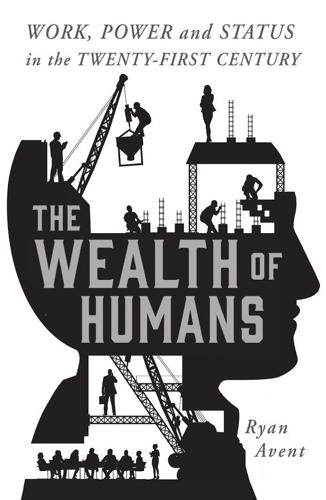
The Wealth of Humans: Work, Power, and Status in the Twenty-First Century
by
Ryan Avent
Published 20 Sep 2016
Ford, Martin, Rise of the Robots: Technology and the Threat of a Jobless Future (London: Oneworld Publications, 2015). 21. Hayes, Christopher, Twilight of the Elites: America After Meritocracy (New York, NY: Crown Publishing Group, 2012). 22. Marc Andreessen (1971–) helped write the code for Mosaic, an early and important web browser, and co-founded Netscape. He later co-founded Andreessen Horowitz, an important Silicon Valley venture capital firm. Many know him best, however, as one of Twitter’s top digital economy gurus. 23. Cowen, Tyler, Average is Over: Powering America Beyond the Age of the Great Stagnation (New York, NY: E.
…
Ray labour abundance as good problem bargaining power cognitive but repetitive collective bargaining and demographic issues discrimination and exclusion global growth of workforce and immigration liberalization in 1970s/80s ‘lump of labour’ fallacy occupational licences organized and proximity reallocation to growing industries retraining and skill acquisition and scarcity and social value work as a positive good see also employment Labour Party, British land scarcity Latvia Le Pen, Jean-Marie Le Pen, Marine legal profession Lehman Brothers collapse (2008) Lepore, Jill liberalization, economic (from 1970s) Linkner, Josh, The Road to Reinvention London Lucas, Robert Lyft maker-taker distinction Malthus, Reverend Thomas Manchester Mandel, Michael Mankiw, Gregory marketing and public relations Marshall, Alfred Marx, Karl Mason, Paul, Postcapitalism (2015) McAfee, Andrew medicine and healthcare ‘mercantilist’ world Mercedes Benz Mexico Microsoft mineral industries minimum wage Mokyr, Joel Monroe, President James MOOCs (‘massive open online courses’) Moore, Gordon mortality rates Mosaic (web browser) music, digital nation states big communities of affinity inequality between as loci of redistribution and social capital nationalist and separatist movements Netherlands Netscape New York City Newsweek NIMBYism Nordic and Scandinavian economies North Carolina North Dakota Obama, Barack oil markets O’Neill, Jim Oracle Orbán, Viktor outsourcing Peretti, Jonah Peterson Institute for International Economics pets.com Philadelphia Centennial Fair (1876) Philippines Phoenix, Arizona Piketty, Thomas, Capital in the Twenty-First Century (2013) Poland political institutions politics fractionalization in Europe future/emerging narratives geopolitical forces human wealth narrative left-wing looming upheaval/conflict Marxism nationalist and separatist movements past unrest and conflict polarization in USA radicalism and extremism realignment revolutionary right-wing rise of populist outsiders and scarcity social membership battles Poor Laws, British print media advertising revenue productivity agricultural artisanal goods and services Baumol’s Cost Disease and cities and dematerialization and digital revolution and employment trilemma and financial crisis (2008) and Henry Ford growth data in higher education of highly skilled few and industrial revolution minimum wage impact paradox of in service sector and specialization and wage rates see also factors of production professional, technical or managerial work and education levels and emerging economies the highly skilled few and industrial revolution and ‘offshoring’ professional associations skilled cities professional associations profits Progressive Policy Institute property values proximity public spending Putnam, Robert Quakebot quantitative easing Race Against the Machine, Brynjolfsson and McAfee (2011) railways Raleigh, North Carolina Reagan, Ronald redistribution and geopolitical forces during liberal era methods of nation state as locus of as a necessity as politically hard and societal openness wealth as human rent, economic Republican Party, US ‘reshoring’ phenomenon Resseger, Matthew retail sector retirement age Ricardo, David rich people and maker-taker distinction wild contingency of wealth Robinson, James robots Rodrik, Dani Romney, Mitt rule of law Russia San Francisco San Jose Sanders, Bernie sanitation SAP Saudi Arabia savings glut, global ‘Say’s Law’ Scalia, Antonin Scandinavian and Nordic economies scarcity and labour political effects of Schleicher, David Schwartz, Anna scientists Scotland Sears Second World War secular stagnation global spread of possible solutions shale deposits sharing economies Silicon Valley Singapore skilled workers and education levels and falling wages the highly skilled few and industrial revolution ‘knowledge-intensive’ goods and services reshoring phenomenon technological deskilling see also professional, technical or managerial work Slack (chat service) Slate (web publication) smartphone culture Smith, Adam social capital and American Constitution baseball metaphor and cities ‘deepening’ definition/nature of and dematerialization and developing economies and erosion of institutions of firms and companies and good government and housing wealth and immigration and income distribution during industrial revolution and liberalization and nation-states productive application of and rich-poor nation gap and Adam Smith and start-ups social class conflict middle classes and NIMBYism social conditioning of labour force working classes social democratic model social reform social wealth and social membership software ‘enterprise software’ products supply-chain management Solow, Robert Somalia South Korea Soviet Union, dissolution of (1991) specialization Star Trek state, role of steam power Subramanian, Arvind suburbanization Sweden Syriza party Taiwan TaskRabbit taxation telegraphy Tesla, Nikola Thatcher, Margaret ‘tiger’ economies of South-East Asia Time Warner Toyota trade China as ‘mega-trader’ ‘comparative advantage’ theory and dematerialization global supply chains liberalization shaping of by digital revolution Adam Smith on trade unions transhumanism transport technology self-driving cars Trump, Donald Twitter Uber UK Independence Party United States of America (USA) 2016 Presidential election campaign average income Bureau of Labour Statistics (BLS) Constitution deindustrialization education in employment in ethno-nationalist diversity of financial crisis (2008) housing costs in housing wealth in individualism in industrialization in inequality in Jim Crow segregation labour scarcity in Young America liberalization in minimum wage in political polarization in post-crisis profit rates productivity boom of 1990s real wage data rising debt levels secular stagnation in shale revolution in social capital in and social wealth surpasses Britain as leading nation wage subsidies in university education advanced degrees downward mobility of graduates MOOCs (‘massive open online courses’) and productivity see also education urbanization utopias, post-work Victoria, Queen video-gamers Virginia, US state Volvo Vox wages basic income policy Baumol’s Cost Disease cheap labour and employment growth and dot.com boom and financial crisis (2008) and flexibility and Henry Ford government subsidies and housing costs and immigration and industrial revolution low-pay as check on automation minimum wage and productivity the ‘reservation wage’ as rising in China rising in emerging economies and scarcity in service sector and skill-upgrading approach stagnation of and supply of graduates Wandsworth Washington D.C.
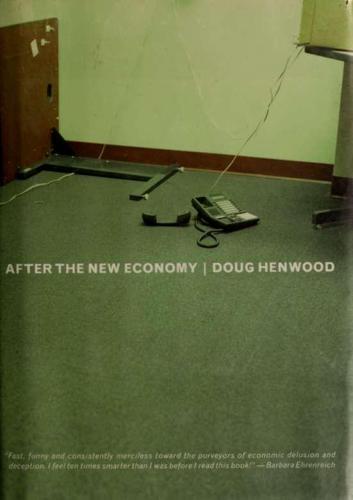
After the New Economy: The Binge . . . And the Hangover That Won't Go Away
by
Doug Henwood
Published 9 May 2005
Closely related to the productivity argument is a claim about innovation: that we Hve in a time of new product development without any his- torical precedent. This is a remarkably amnesiac claim. The development of the telegraph, for example, reduced the time needed for communication across oceans and continents from weeks to seconds; surely this was a change far more profound than the development of the first Mosaic web browser. Similarly with railroads, automobiles, radio, television, antibiotics, telephones, electricity, jet travel, plastics, indoor plumbing.... Indeed, someone born in 1870 and Hving the allotted threescore years and ten saw the world change far more than someone like me, say, born in 1952. And, while the number of new products may be larger than ever in absolute terms, the pace of innovation may actually be slower than in the past.

Beyond: Our Future in Space
by
Chris Impey
Published 12 Apr 2015
Mex., 239 Los Angeles Times, 71 Losing My Virginity (Branson), 86, 87 Louis IX, king of France, 23 Louis XVI, king of France, 68 Lovelock, James, 286 Lowell, Percival, 163–64 Lucian of Samosata, 20 Lucretius, 18–19 Luna program, 50–51 Lunar and Planetary Laboratory, 156 Lunokhod rover, 143 Lynx rocket plane, 101 M5 fiber, 161 McAuliffe, Christa, 55, 74 Mack 3 Blackbird, 69 McKay, Chris, 173 McLellan, William, 283 magnetic implants, 207 magnetic resonance imaging (MRI), 190 magnetic sails, 186, 223 magnitude of time, 248–50, 249 Manhattan Project, 36, 221 Manifest Destiny, applied to space, 146–47, 199 Manned Habitat Unit, 169 many worlds concept, 17–20, 17, 49, 267 Mao Zedong, 141 Marconi, Guglielmo, 237 Mariner 2, 51 Mariner 4, 164 Marino, Lori, 190 Marriott hotels, 145 Mars, 28, 237, 270 challenges of travel to, 166–70 distance from Earth to, 50, 148, 166 Earth compared to, 171–72, 216 establishing a colony on, 166–71, 169, 192, 195, 200–201, 203, 214, 248 evidence of water on, 124–25, 163–66, 165, 173 fly-bys of, 51, 170 imaginative perceptions of, 163–65 latency on, 178 map of, 163 obstacles to exploration of, 66–67, 148 one-way journey to, 166, 170–71, 200 as potentially habitable, 124–25, 163, 165–66, 171, 172–74, 234, 278 privately funded missions to, 170–71 probes to, 40, 51, 52, 164–65, 176, 246 projected exploration of, 94–98, 101, 104, 115, 119, 157, 161, 163–74, 178, 181, 182 property rights on, 145, 198–99 sex and reproduction on, 200 simulated journey to, 169–70 soil of, 170 staging points for, 161 terraforming of, 172–74, 182, 216, 227 tests for life on, 52 Mars Direct, 169 Mars500 mission, 169 Mars One, 170–71, 198–201 Mars Society, 166 Mars 3 lander, 51 Masai people, 120 Massachusetts General Hospital, 250 Masson-Zwaan, Tanja, 199 mathematics, 19 as universal language, 236–37 Matrix, The, 260 matter, manipulation of, 258 matter-antimatter annihilation, 220, 220, 221–22 Mavroidis, Constantinos, 182 Max-Q (maximum aerodynamic stress), 46 Maxwell, James Clerk, 183 Mayor, Michel, 126–28, 133 medicine: challenges and innovation in, 92–93, 263 cyborgs in, 205 medicine (continued) as lacking in space, 200 in life extension, 259 nanotechnology in, 225, 259 robots in, 180, 181, 182, 205 mediocrity, principle of, 261 Mendez, Abel, 278 mental models, 13–17, 18–19 Mercury: orbit of, 126, 215 property rights on, 145 as uninhabitable, 124 mercury poisoning, 118 Mercury program, 41, 42, 71, 74, 272 meta-intelligence, 94 meteorites, 152, 160, 160, 164, 195 methane, 52–53, 125, 132, 278 as biomarker, 217–18 methanogens, 217 “Method of Reaching Extreme Altitudes, A” (Goddard), 30, 31 Methuselah, 131 mice, in scientific research, 48–49, 250–51 microbes, microbial life, 97–98, 173, 174, 217, 241, 246, 286 habitable environments for, 122–25, 165–66, 186 microcephaly, 203 microgravity, 115 microsatellites, 90 Microsoft, 84, 188 microwaves: beaming of, 223–24 signals, 187 Microwave Sciences, 223 Middle East, population dispersion into, 8, 118 migration: early human population dispersion through, 5–9, 9, 15, 19 motivation for, 9–12, 11 military: covert projects of, 69–72 Eisenhower’s caveat about, 79 in Internet development, 77, 78–79 nanotechnology in, 180–81, 225 in rocket development, 30, 32–39, 55–56, 71 in space programs, 73, 76, 79, 144, 153 Milky Way galaxy, 227, 240, 253, 263, 270 ancient Greek concept of, 18 Drake equation for detectable life in, 188, 233–35 Earth-like exoplanets in, 129–33, 233, 291 formation and age of, 235 size of, 242 Millis, Marc, 290 mind control, 245 mind uploading, 259 miniaturization, see nanotechnology minimum viable population, 201, 251 mining: of asteroids, 155–56, 182, 214 of Enceladus, 227 on Moon, 214 by robots, 178, 182 Minsky, Marvin, 177, 179 MirCorp, 75 mirrors, 173 Mir Space Station, 75, 115, 167–68 Miss Baker (monkey), 47–48, 48 Mission Control, 43, 100, 158, 269 MIT, 38, 77, 90, 141, 226, 257 mitochondrial DNA, 6, 9 Mittelwerk factory, 33, 35 Mojave Desert, 71, 82, 83 population adaptation to heat in, 118–19 molecules, in nanotechnology, 151 Mongols, 23, 24 monkeys, in space research, 47–48, 48 Montgolfier brothers, 68 Moon: age of, 50 ancient Greek concept of, 18 in asteroid capture, 156 distance from Earth to, 49–50, 150, 166, 267 first animals on, 49 first man on, 71, 158 latency on, 178 lunar base proposed for, 157–63, 158, 160, 195, 214, 248 manned landings on, 44–45, 49–50, 54, 56, 63, 71, 84, 99, 104, 108, 143, 157, 158, 176, 219, 270, 272 obstacles to exploration of, 66 orbit of, 25 probes to, 40, 51, 129, 140, 143 projected missions to, 92, 143, 157–63, 166, 214, 275 property rights on, 145–47, 198–99 proposed commercial flights to, 102 in science fiction, 20, 26 soil of, 159, 160, 162 as staging point for Mars, 161 staging points for, 148 telescopic views of, 31, 49–50 as uninhabitable, 124, 166 US commitment to reach, 41–45 Moon Treaty (1979), 146 Moon Treaty, UN (1984), 279 Moore, John, 203 Moravec, 259–60 Morgan, Barbara, 74 Morrison, Philip, 187, 239 Mosaic web browser, 79 Moses, 148 motion, Newton’s laws of, 25, 67–68 multistage rockets, 29 multiverse, 252–57, 255 Musk, Elon, 94–98, 97, 100–101, 112–13, 148, 205 mutation, 6–7 cosmic rays and, 204 7R, 10–12, 11, 15 mutually assured destruction, 42 Mylar, 184, 225 N1/L3 rocket, 44, 54 nanobots, 179–82, 181, 224–28 NanoSail-D, 184, 185 nanosponges, 180 nanotechnology, 151–52, 179–82, 208, 214, 245, 280, 283 projected future of, 257–59 see also nanobots National Aeronautics and Space Administration (NASA), 83, 90, 96, 97–98, 114, 116–17, 128, 144, 153, 156, 176, 178, 182, 184–85, 185, 195, 200, 205, 206, 216, 224, 226, 271, 275, 280, 290 and Air Force, 71 artistic depiction of space colonies by, 196, 196 budget of, 39, 42, 43, 49, 54, 64, 75, 99, 104, 140, 144, 158, 166, 188, 238, 270, 272, 284 cut back of, 45, 49, 54, 188 formation of, 38–39, 145, 269 private and commercial collaboration with, 99–102, 104 revival of, 103–5 space program of, 51, 55–56, 71–76, 92, 157–58, 285–86 stagnation of, 63–67, 141, 147, 166 National Geographic Society, 7, 265 National Radio Astronomy Observatory, 187–88 National Science Foundation (NSF), 78–79 Native Americans, 118 naturalness, 256 natural selection, 6, 16, 123, 164, 251, 291 Nature, 187 Naval Research lab, 37 Navy, US: Bureau of Aeronautics, 30 in rocket development, 36–37 Nayr, Ernst, 238 Nazis, 48 Propaganda Ministry of, 32 von Braun and, 32–34, 141, 269 NBC, 75 Nedelin, Mitrofan, 43 “needle in a haystack” problem, 188–89, 242–43 “Nell” (rocket), 29 Neptune, 127, 131, 225 as uninhabitable, 125 Nergal, 163 Netscape, 80 New Mexico, 88, 88, 105 Newton, Isaac, 24–25, 25, 30, 67–68, 110, 262, 267 New York Times, 30, 94 Nicholas, Henry, 214 Niven, Larry, 198, 253 Nixon, Richard, 108, 167 Nobel Prize, 126, 180, 214 nomad planets, 128 Noonan, James, 266 nuclear fission, 220, 220, 221 nuclear fusion, 110, 161–62, 220, 221, 221, 222 nuclear reactors, 224 nuclear weapons, 36, 42, 78, 129, 146, 197–98, 222, 234–35, 244, 245, 246, 286 Nuremberg Chronicles, 17 Nyberg, Karen, 200 Obama, Barack, 104 Oberth, Hermann, 28, 31–32, 36, 268 oceans: acidification of, 195 sealed ecosystem proposed for, 197 Oculus Rift, 176 Ohio, astronauts from, 74 Okuda, Michael, 228 Olsen, Ken, 213 100 Year Starship project, 224 100 Year Starship Symposium, 229 101955 Bennu (asteroid), 156 O’Neill, Gerard, 196, 251–52 Opportunity rover, 165 optical SETI, 190, 243 Orbital Sciences Corporation, 100–101, 275 orbits: concept of, 25 geostationary, 149–50, 150 legislation on, 146 low Earth, 49, 54, 63, 70–71, 70, 74–75, 97, 100, 110, 113–14, 151, 155, 184 manned, 40–41, 141–42 staging points from, 148 orcas, 190 Orion spacecraft, 104 Orteig, Raymond, 90 Orteig Prize, 90–91 Orwell, George, 35 OSIRIS-REx, 156 Outer Space Treaty (1967), 145–47, 198–99 “Out of the Cradle, Endlessly Rocking” (Clarke), 201 oxygen, 156, 159, 161, 170, 172, 173–74, 182, 193–95, 214 Oymyakon, Siberia, population adaptation to cold in, 119–20 ozone, as biomarker, 217 Pacific Ocean, 9, 224 Pac-Man, 175 Page, Larry, 92 Paine, Thomas, 167 Pale Blue Dot (Sagan), 121 “Pale Blue Dot,” Earth as, 53, 118–22, 121, 130 Paperclip, Operation, 141 parabolic flight, 93 paradox, as term, 241 Paratrechina longicornis (crazy ant), 193 Parkinson’s disease, 202–3 particle physics, standard model of, 256 Pascal, Blaise, 120 Pauley, Phil, 196–97 PayPal, 95, 97 Pensées (Pascal), 120 People’s Daily, 162 People’s Liberation Army, 144 Pericles, 18 Pettit, Don, 100, 273 phenotype, 6 philanthropy, 95 PhoneSat, 185 photons, 183, 186 in teleportation, 229, 230, 231 photosynthesis, as biomarker, 217 pigs, 250 Pinker, Steven, 16 Pioneer probes, 50, 51–52 piracy, 24 Pitcairn Island, 202 planetary engineering, 172 Planetary Resources, 156 planetary science, 51–52, 176 Planetary Society, 184 planets: exploration of, 49–53 formation of, 156 plate techtonics, 132, 241 play, imagination in, 10, 14 pluralism, 17–20, 17, 49 plutonium, 66 poetry, space, 272–73 politics, space exploration and, 63–64, 104, 141, 214, 238 Polyakov, Valeri, 115, 167–68 population bottleneck, 201–2, 287 Poynter, Jane, 193 Princess of Mars, A (Burroughs), 164 Principia (Newton), 25 Project Orion, 221, 221 Project Ozma, 187–88, 237, 253 prokaryotes, 172 property rights, in space, 145–47, 198 Proton rockets, 65, 113 proton scoop, 222–23 Proxmire, William, 238 Puerto Rico, 239, 243 pulsar, 131 Pythagorean Theorem, 238 Qian Xuesen, 141 Qi Jiguang, 24 Qualcomm Tricorder X Prize, 92 quantum entanglement, 230–32, 230 quantum genesis, 255 quantum mechanics, 258 quantum teleportation, 230–32, 230 quantum theory, 189 qubits, 230 Queloz, Didier, 126–28, 133 R-7 rocket, 37 R-16 rocket, 43 radiation, infrared, 109, 253–54, 254 radioactivity, as energy source, 124, 181 radio waves, 66, 187, 189, 242 ramjets, 222–23 RAND Corporation, 222 Rare Earth hypothesis, 241 RCS Energia, 106 RD-180 engine, 72 Reagan, Ronald, administration of, 167, 271 reality TV, 75, 171, 214, 282 “Realm of Fear,” 229 reasoning, human capacity for, 13–17, 18–19 red dwarfs, 131 Red Mars (Stanley), 174 Red Scare, 141 Redstone rocket, 36–37, 71 reindeer, 119–20 remote sensing, 175–91, 224 RepRap Project, 227 reproduction, sexual, 6, 172 Ride, Sally, 74 “Right Stuff,” as term, 71, 114 Right Stuff, The (Wolfe), 272 Ringworld series (Niven), 253 risk: as basic to human nature, 9, 262 genetic factor in, 10–12 of living on Mars, 167–70 in pushing human limits, 120 of space tourism, 102, 105–9, 155 of space travel, 42–43, 55–56, 56, 106–9, 152–53 Robinson, Kim Stanley, 174 robonaut project, 179 robots, robotics: as aids to humans, 249, 250 in asteroid redirection, 104 commercial, 178 ethical issues of, 179 nanotechnology in, 179–82, 181 remote control of, 177–78 remote sensing through, 176 self-assembly and self-replication by, 226–28, 258, 259 in spacecraft, 50, 100, 100 space exploration by, 53–57, 66, 98, 133, 161, 177–79, 179, 208, 224–28 see also cyborgs; nanobots Rocketdyne, 112 rocket equation, 27, 53, 72–73, 110–11, 111, 148, 220, 268 rocket fuel, 110–13, 148, 156, 159, 161 comparison of efficiency of, 219–24 Rocket Performance Calculator, 222 rockets: alternatives to, 148–53 “bible” of, 267 challenges in launching of, 43–44, 46–49, 106, 107, 111–12, 148 comparison of US and Soviet, 44 cost of, 112–13, 113 developing technology of, 21–39, 43, 101, 103, 112–13, 183, 262 fuel for, 110–13, 148, 156, 159, 161, 220–21 launched from planes, 84 liquid-fueled, 28–29, 29 physics and function of, 110–14 proposed energy technologies for, 220–24 reusable, 101, 103, 111, 112, 113 solar sails compared to, 183 as term, 23 visionaries in development of, 26–30, 94 in warfare, 22–24, 30, 32–34 see also specific rockets “Rockets to the Planets in Space, The” (Oberth), 28 Rogers Commission, 271 Rohrabacher, Dana, 284 Rome, ancient, 18, 67, 163 Rovekamp, Roger, 207 rovers, 66–67, 92, 125, 140, 143, 158, 165, 167 nanotechnology in, 181–82 remote sensing through, 176 Rozier, Jean-François de, 68 RP-1 kerosine, 110 RS-25 rocket, 112 Russia, 23, 26–27, 149, 178 space program of, 37, 65–66, 72, 75, 84, 91, 104, 106, 107–8, 113, 114, 140, 143, 168, 184, 195, 200, 271 space tourism by, 75, 102 tensions between US and, 72 see also Soviet Union Russian Revolution, 27, 47 Russian Space Agency, 102 Rutan, Burt, 72, 82–86, 85, 88, 88, 89, 91, 97–98, 105–6, 214 Rutan, Dick, 83–84 Rutan Aircraft Factory, 83 Saberhagen, Fred, 177, 259 Sagan, Carl, 53, 121–22, 121, 176–77, 184, 198, 234–35, 238, 240 Sahakian, Barbara, 98 Sahara Desert, 238 sails: solar, 183–86, 185 wind-driven, 67–68, 183, 262 Salyut space station, 54, 108 satellites: artificial Earth, 36–39, 37, 40, 65, 71, 106 commercial, 96, 105 communications, 101, 142, 153 in energy capture, 253 geostationary, 149 GPS, 144 launching of, 154, 154 miniature, 90, 184–85 Saturn: moon of, 125, 227 probes to, 52–53 as uninhabitable, 125 Saturn V rocket, 43, 44, 46, 54, 83, 104, 111, 113, 113, 166 Scaled Composites, 83, 89 science fiction, 192, 196, 222, 223, 239, 250, 253 aliens in, 186–87 in film, 28, 204 Mars in, 164, 174 roots of, 20 technologies of, 228–32, 259 see also specific authors and works scientific method, 213 Search for Extraterrestrial Intelligence (SETI), 187–90, 234, 239, 254 evolution and technology of, 237–39, 242–43, 242 lack of signals detected by, 236–37, 240–44 new paradigms for, 258 “Searching for Interstellar Communications” (Cocconi and Morrison), 187 sea travel: early human migration through, 8, 9 exploration by, 109, 262 propulsion in, 67–68 self-replication, 226–28, 258, 259 Senate, US, Armed Services Preparedness Committee of, 39 SETI Institute, 188 78–6 (pig), 250 sex: promiscuous, 12 in reproduction, 6, 172 in space, 200, 214 Shackleton Energy Company, 161 Shane, Scott, 98 Shatner, William, 88–89 Shelley, Mary, 206 Shenlong (“Divine Dragon”), 145 Shenzhou 10, 142–43 Shepard, Alan, 41, 84 Shostak, Seth, 243 Siberia, 65, 119–20, 238 population dispersion into, 8, 118, 218 Sidereal Messenger, The (Galileo), 270 Siemienowicz, Kazimierz, 267 Simonyi, Charles, 75 Sims, 175 simulation: infinite regression in, 261 living in, 257–62 simulation hypothesis, 261 Sinatra, Frank, 45 singularity, 207 in origin of cosmos, 255 and simulation, 257–62 technological, 258–59 Singularity University, 94, 259 Skylab space station, 54, 116 Skype video, 176 smart motes, 181, 225 smartphones, 92, 185 Smithsonian Institution, 30, 81 Smithsonian National Air and Space Museum, 85, 91, 271 Snow Crash (Stephenson), 103 Snowden, Edward, 178 social media, 195 Sojourner rover, 165 SolarCity, 96–97 solar flares, 167 solar power, 96, 181, 183–86 solar sails, solar sailing, 183–86, 185, 223, 225, 227 Solar System: discovery of first planet beyond, 126–27 edge of, 50, 53, 121 formation of, 156 habitability potential in, 122, 124–26 latency variations in, 178 probes into, 51–52, 66, 177, 185–86, 208, 270 projected travel within, 248–49, 263 property rights in, 145–47, 198 worlds beyond, 126–29, 156, 208, 215, 250, 263 solar wind, 162, 223 sound barrier, breaking of, 69, 71 South America, 11, 202, 218 Soviet Union, 30, 34, 37, 141 fall of, 47, 65, 75, 197, 271–72 rocket development in, 35–39 space program failures and losses of, 43, 47, 50–51, 54, 269 space program of, 37–39, 40–43, 141, 149, 237, 271 Soyuz spacecraft, 43, 55, 75, 84, 91, 102, 106, 113, 143 crash of, 107–8 space: civilians in, 55, 74 civilian vs. military control of, 37–39, 69–71, 79, 153 commercialization of, 55, 63, 73–76, 79–80, 88–89, 92, 97, 99–109, 100, 110, 147, 153–56, 154, 199, 214, 249, 275 debris in, 144, 152 first American in, 41 first man in, 40–41, 41 first women in, 40, 74 as infinite, 18, 19, 22 as inhospitable to human beings, 53–54, 114–17, 121 legislation on, 39, 78, 90, 144, 145–47, 198–200 living in, 192–208 “living off the land” in, 166, 200 peaceful exploration of, 39 potential for human habitabilty in, 123 prototype for sealed ecosystem in, 192–97 Space Act (1958), 39, 90 Space Adventures, 102, 275 space colonization: challenges of, 197–201 cyborgs in, 204–8 evolutionary diversion in, 201–4 legal issues in, 198–200 of Mars, 166–71, 169, 192, 195, 203 off-Earth human beings in, 215, 250–51 prototype experiments for, 192–97 space elevators, 27, 148–53, 150, 160–61, 185, 280 “Space Exploration via Telepresence,” 178 Spaceflight Society, 28 space hotels, 102–3 Space Launch System (SLS), 104 space mining, 155–56, 161–62 “Space Oddity,” 142 spaceplanes, 71–72, 85, 144 Spaceport America, 1–6, 105 Space Race, 35–39, 37, 40–43, 50, 55, 139 SpaceShipOne, 72, 85, 85, 88–89, 88, 91 SpaceShipTwo, 88, 101, 105 Space Shuttle, 45, 46, 49, 64, 72, 84, 85, 111–13, 112, 159, 167, 194, 219–20, 222, 275 disasters of, 55–56, 56, 74–75, 107, 111–13 final flight of, 271 limitations of, 55–56, 64–65 as reusable vehicle, 54–55 space sickness, 114 spacesuits, 89, 182, 195–96 space-time, 255, 255 manipulation of, 258 space tourism, 63, 73, 75–76, 79–80, 88–89, 91, 101–3, 154, 170, 214 celebrities in, 88, 101–2 revenue from, 154–55, 155 risks of, 102, 105–9, 155 rules for, 105 space travel: beyond Solar System, see interstellar travel bureaucracy of, 105–10, 271 cost of, 39, 42, 45, 49, 54, 55, 66, 75, 81–82, 91, 112–14, 113, 139–49, 153, 155–56, 158–59, 161, 166, 179, 183, 198, 214, 217, 222, 224–26, 252, 270, 275, 284 early attempts at, 21–22, 22 effect of rocket equation in, see rocket equation entrepreneurs of, 81–98 erroneous predictions about, 214 failures and disasters in, 21–22, 22, 38, 43, 47, 50–51, 54–56, 56, 63–64, 68, 72, 74–75, 101, 102, 107, 142, 184, 269, 271, 275 fatality rate of, 107–9 fictional vignettes of, 1–4, 59–62, 135–38, 209–12 Internet compared to, 76–80, 77, 80 life extension for, 250–51 lifetimes lived in, 251 living conditions in, 114–17 new business model for, 99–105 Newton’s theories as basis of, 25 obstacles to, 21, 63, 66–67, 105–109 space travel (continued) as part of simulation, 261–62 public engagement in, 45, 73, 85, 93, 162, 177, 217 remote sensing vs., 175–91 risks of, 43–44, 83, 89, 93, 105–9 speculation on future of, 76–80, 133, 213–32, 248–52 suborbital, 84 telescopic observation vs., 49–50 visionaries of, 26–39, 80, 94, 109 SpaceX, 96, 97, 100–103, 113–14, 275 SpaceX Dragon spacecraft, 96, 100, 100, 102, 170 special theory of relativity, 228, 231 specific impulse, 220 spectroscopy, 127, 165, 176 spectrum analyzer, 237 Speer, Albert, 34 Spielberg, Steven, 238 Spirit of St.

This Is for Everyone: The Captivating Memoir From the Inventor of the World Wide Web
by
Tim Berners-Lee
Published 8 Sep 2025
Marc eventually just unilaterally added the IMG specification to Mosaic. As was his right, I suppose – the whole purpose of placing the web standards in the public domain was to allow for this sort of modification, without my explicit permission. And Mosaic was fast becoming popular – a dominant monopoly. Mosaic rapidly surpassed ViolaWWW as the web’s most popular browser. A great part of its success was due to Marc’s hard work. He paid close attention to user requests from various hypertext newsgroups and, together with programmer Eric Bina, rolled out features on a rapid development cycle. Marc was the first to approach web users as ‘customers’ and, unlike Pei Wei and Tom Bruce, he had a team of people supporting him – funded by Al Gore’s bill.
…
Are you looking at the future of, say, jobs in the legal industry, or the discovery of new cancer drugs, or the containment of superintelligence. You can’t lump it all together! Are there any pure doomers who only see the bad sides? Not that I have found. Are there any pure boomers, who only think of the good? Well, maybe one. Marc Andreessen – yes, the coder at the NCSA who made the Mosaic web browser and co-founded Netscape back in the day – now co-manages the Andreessen Horowitz venture-capital fund in Silicon Valley. He is a self-styled techno-optimist, and his June 2023 blog ‘Why AI Will Save the World’ makes fun of anyone who has any concerns about AI as being scared of ‘killer robots’: My view is that the idea that AI will decide to literally kill humanity is a profound category error.
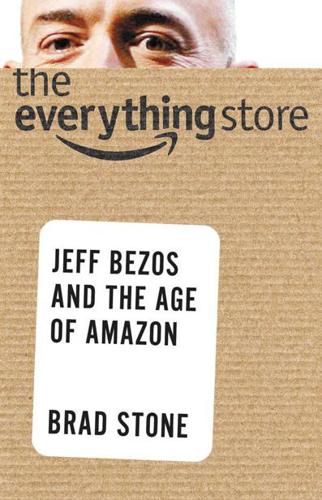
The Everything Store: Jeff Bezos and the Age of Amazon
by
Brad Stone
Published 14 Oct 2013
And the person he anointed to spearhead the effort was Jeff Bezos. D. E. Shaw was ideally situated to take advantage of the Internet. Most Shaw employees had, instead of proprietary trading terminals, Sun workstations with Internet access, and they utilized early Internet tools like Gopher, Usenet, e-mail, and Mosaic, one of the first Web browsers. To write documents, they used an academic formatting tool called LaTeX, though Bezos refused to touch the program, claiming it was unnecessarily complicated. D. E. Shaw was also among the very first Wall Street firms to register its URL. Internet records show that Deshaw.com was claimed in 1992.
…
One day, the young CEO grabbed the wrong cup and took a slug of curdled, week-old latte. He spent the rest of the day complaining that he might have to go to the hospital. Everyone was working long days, scrambling to keep up, and not getting enough sleep. On August 9, 1995, Netscape Communications, the corporate descendant of the pioneering Mosaic Web browser, went public. On the first day, its stock jumped from an initial price of $28 per share to $75, and the eyes of the world opened to the gathering phenomenon that was the World Wide Web. While he and his employees worked exceedingly long days, Bezos was always thinking about raising money. That summer the Bezos family, using the Gise family trust (Gise was Jackie’s maiden name), invested another $145,000 in Amazon.9 But the company couldn’t continue hiring and growing on the Bezos family savings alone.
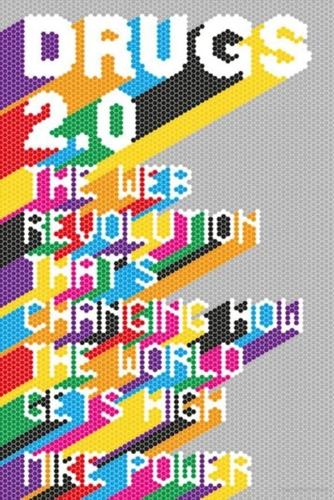
Drugs 2.0: The Web Revolution That's Changing How the World Gets High
by
Mike Power
Published 1 May 2013
With great modesty and foresight, the physicist demonstrated and distributed, for free, a technology that would help his fellow particle physicists to share their findings into the fundamental nature of reality at CERN. Berners Lee’s genius was to write HTML, or hypertext markup language, which allowed the linking of one document to any other that was hosted on the new networks. For the first few years, this new web would be popular only with expert users, but from 1993, with the launch of the Mosaic web browser, the technology caused a serious commercial and cultural buzz beyond academia. During the alt.drugs.chemistry scene, one new drugs website called the Hive was also becoming a very busy online gathering point for people interested in the psychedelic experience, and in particular MDMA users and manufacturers.

Valley of Genius: The Uncensored History of Silicon Valley (As Told by the Hackers, Founders, and Freaks Who Made It Boom)
by
Adam Fisher
Published 9 Jul 2018
The first version of the world wide web was hacked together in 1990 by Tim Berners-Lee, an English computer scientist working in a French physics lab. The embryonic web was a geeky but efficient way to link a couple thousand physicists to a tiny number of supercomputers. Then Marc Andreessen, an American student working at NCSA, the National Center for Supercomputing Applications at the University of Illinois, built NCSA Mosaic—the first decent web browser. Steven Johnson: You can’t imagine how hard it was just to get on the internet in like 1991 or 1992. It was a colossal battle. You knew that there was this incredible thing out there, but it was just really difficult to get to. All the online spaces were discontinuous—there was The Well, CompuServe, AOL, but they were all separate dial-up universes.
…
People at the University of Illinois had a lot of animosity toward us, because we were absconding with their crown jewels, and going to make money on them. Lou Montulli: We were essentially doing a new implementation, a reimplementation, of something we already knew very well, Mosaic. Our goal was to create a brand-new web browser from the ground up. But we already knew what it should look like, and we basically knew how it should perform. We had all written the code once already. Jim Clark: I had spent some energy trying to get everything smoothed out, and I wanted to pay them some kind of a fee just so they would be quiet.
…
Moby, aka Richard Melville Hall, is an American musician who had his greatest commercial success—the double-platinum album Play—just as Napster was also peaking. To Moby, Napster just seemed like the future of music: the next thing after radio. Lou Montulli was a student at the University of Kansas when he first saw NCSA Mosaic, which was the first web browser worthy of the name. He immediately started submitting bug reports and soon after joined Netscape in Silicon Valley. After eighteen months of all-nighters Montulli was a deca-millionaire several times over. Gordon Moore, who in 1965 ran R&D at Fairchild Semiconductor, was bold enough to predict that the number of transistors on a chip would double every year for the next ten years.

Mindf*ck: Cambridge Analytica and the Plot to Break America
by
Christopher Wylie
Published 8 Oct 2019
I decided to connect with a couple of friends who worked in Silicon Valley. One of them—I’ll call her “Sheela”—knew someone at Andreessen Horowitz, the venture capital firm co-founded by the tech wunderkind Marc Andreessen. In the early nineties, Andreessen, along with Eric Bina, had created the Mosaic Web browser, forever changing the way people used the Internet. Mosaic became Netscape, which became one of the earliest Internet super-successes with its IPO in 1995. Since then, Andreessen had made hundreds of millions of dollars investing in companies like Skype, Twitter, Groupon, Zynga…and Facebook.
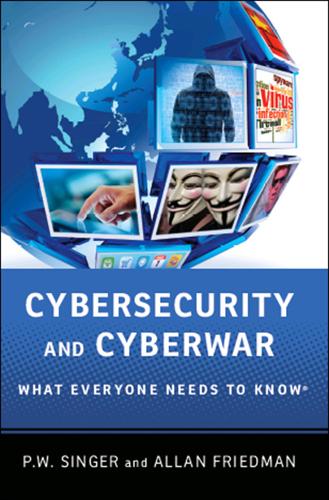
Cybersecurity: What Everyone Needs to Know
by
P. W. Singer
and
Allan Friedman
Published 3 Jan 2014
Amusingly, when Berners-Lee tried to present it at an academic conference, his breakthrough wasn’t considered worthy enough even to make a formal panel. Instead, he was relegated to showing a poster on it in a hallway. A few years later, researchers at the University of Illinois introduced the Mosaic web browser, which simplified both web design and introduced the new practice of “web surfing” for the general public. And whether we like to admit it or not, this is the period when the pornography industry proved integral to the Internet’s history. A darker domain that some estimate makes up 25 percent of all Internet searches, the smut industry drove both new online users and new online uses like instant messaging, chatrooms, online purchasing, streaming video, trading files, and webcams (and the growing demands each of these placed on bandwidth, driving more underlying business).
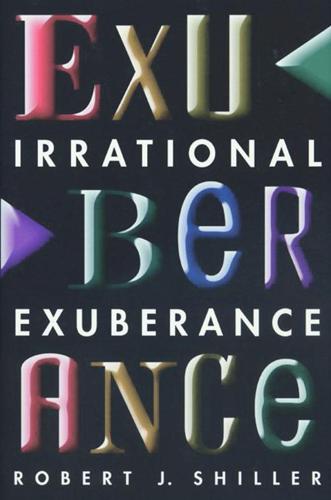
Irrational Exuberance: With a New Preface by the Author
by
Robert J. Shiller
Published 15 Feb 2000
The Arrival of the Internet at a Time of Solid Earnings Growth The Internet and the World Wide Web have invaded our homes during the second half of the 1990s, making us intimately conscious of the pace of technological change. The World Wide Web first appeared in the news in November 1993. The Mosaic Web browser first became available to the public in February 1994. These dates mark the very beginning of the World Wide Web, when only a few people had access to it. Large numbers of users did not discover the Web until 1997 and later, marking the very years when the NASDAQ stock price index (which is heavily weighted toward high-tech stocks) soared, tripling to the beginning of 2000, and priceearnings ratios took off into unprecedented territory.

System Error: Where Big Tech Went Wrong and How We Can Reboot
by
Rob Reich
,
Mehran Sahami
and
Jeremy M. Weinstein
Published 6 Sep 2021
Before becoming vice president in 1992, he was the chief architect of the 1991 High Performance Computing and Communications Act, which directed $600 million of funding for computing research and collaboration between academia and industry. Among other accomplishments, the legislation laid the foundation for the work of Marc Andreessen and others at the University of Illinois in creating the Mosaic web browser. In 1994, the Clinton administration created the first website for the White House, bringing to the world an online presence for the federal government far earlier in the World Wide Web’s development than was the case for many companies and universities (at the end of 1994, there were fewer than ten thousand websites in the entire world).

Androids: The Team That Built the Android Operating System
by
Chet Haase
Published 12 Aug 2021
And you learn life lessons that stick with you, like which end of the soldering iron to never pick up.” Swetland continued programming through childhood and then college, but didn’t finish his computer engineering degree. “Sophomore year I didn’t make it to classes for a large chunk of it. Projects with the local ACM chapter, a job at NCSA SDG, and working on the X/Mosaic web browser had distracted me. Then finals happened, and it wasn’t pretty.” But hobby programming led him to Be, and he captured the company’s interest while trying to get BeOS to work on his PC. When Be released a version of their OS for PCs, Swetland installed the CD on his computer. But it didn’t quite work.
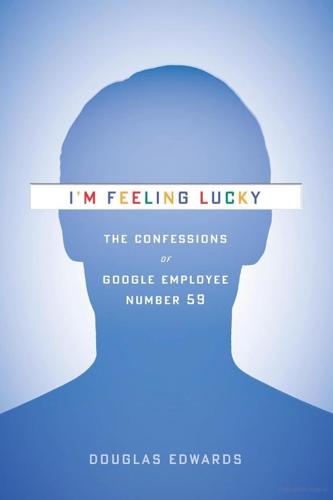
I'm Feeling Lucky: The Confessions of Google Employee Number 59
by
Douglas Edwards
Published 11 Jul 2011
.* This was almost single-handedly the work of Michael Schmitt, an engineer who took it upon himself to conduct a global search to track down tapes and CD backups of the earliest Usenet posts and the hardware that could read them. He recovered for posterity the first Usenet mention of Microsoft, Tim Berners-Lee's first posted reference to the "World Wide Web," and Marc Andreessen's public disclosure of the Mosaic web browser that would become Netscape. "If there were justice in the world," wrote a formerly disappointed Usenetter, "you guys would be rich and Bill Gates would be standing in line waiting for watery soup." Not that Larry and Sergey needed affirmation that they had made the right call, but still, it was nice to hear.

Consumed: How Markets Corrupt Children, Infantilize Adults, and Swallow Citizens Whole
by
Benjamin R. Barber
Published 1 Jan 2007
But because de facto standards are supported by the marketplace rather than by law, they are chosen for the right reasons and to get replaced when something truly better shows up.”79 In his boosterist paean to new technologies called The World Is Flat, Thomas L. Friedman rightly extols the pioneering work of Marc Andreessen in developing the Mosaic web browser, which set an industry standard and turned the internet into a usable technology.80 What he fails to notice is that it was not Andreessen the pioneer but Gates the rational consolidator who fashions the consumer monopoly and makes the fortune off of pioneers who came first. Let others test the market: then jump when the results are in.

The Power Law: Venture Capital and the Making of the New Future
by
Sebastian Mallaby
Published 1 Feb 2022
“I’d like to thank you again for nudging me in the right direction all those years ago,” he wrote to Mitch Kapor after the flotation. “I’ve got $138 million. Pretty surreal,” he added.[61] There was a coda to the UUNET story, and it reinforced the lessons about venture capital. The magical Mosaic web browser, announced by The New York Times in December 1993, had come out of a taxpayer-backed lab at the University of Illinois: it was another instance of government science kick-starting the online revolution. But the lead inventor of the browser, Marc Andreessen, did not stay in Illinois for long.

Free as in Freedom
by
Sam Williams
Published 16 Nov 2015
Determined not to squander the opportunity, Raymond traveled west to deliver interviews, advise Netscape executives, and take part in the eventual party celebrating the publication of Netscape Navigator's source code. The code name for Navigator's source code was "Mozilla": a reference both to the program's gargantuan size-30 million lines of codeand to its heritage. Developed as a proprietary offshoot of Mosaic, the web browser created by Marc Andreessen at the University of Illinois, Mozilla was proof, yet again, that when it came to building new programs, most programmers preferred to borrow on older, modifiable programs. While in California, Raymond also managed to squeeze in a visit to VA Research, a Santa Clara-based company selling workstations with the GNU/Linux operating system preinstalled.
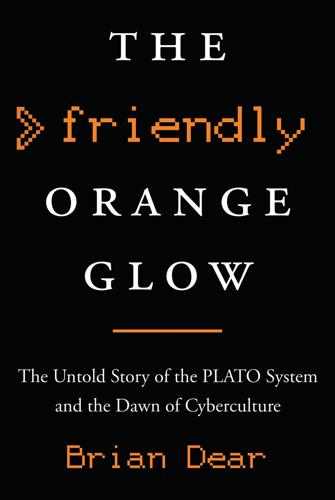
The Friendly Orange Glow: The Untold Story of the PLATO System and the Dawn of Cyberculture
by
Brian Dear
Published 14 Jun 2017
It acts as a natural hyphen connecting the two towns of Champaign and Urbana. For years, mere mention of Boneyard to locals triggered strong responses. Hardly a creek, they would tell you: a notorious, no-good, toxic trickle of stinky sewage, more like. Says Marc Andreessen, in the early 1990s a UI undergrad creating the Mosaic web browser, and now a very successful venture capitalist, “I was always worried it was generating invisible fumes that were going to kill me.” The Boneyard, environmentalists insisted, played a key role as an important Champaign County watershed. Past Urbana, it flowed east into one of numerous tributaries that eventually fed into the Wabash River, which in turn dumped into the Ohio River on its way to the mighty Mississippi.

The Rise and Fall of American Growth: The U.S. Standard of Living Since the Civil War (The Princeton Economic History of the Western World)
by
Robert J. Gordon
Published 12 Jan 2016
In December 1991, the first server in the United States was installed at the Stanford Linear Accelerator System, and the World Wide Web became accessible. The first browser was released at the same time. In September 1993, the National Center for Supercomputing Applications released Mosaic, which quickly came to dominate other web browsers and was soon dubbed the “killer app” of the Internet.19 However, if any year can be anointed as the beginning of the Internet revolution, it is 1995. The introduction of Windows 95 was a sensation, creating long lines of eager buyers waiting for hours in front of stores that would sell it before the doors opened on August 24, 1995.20 This version of Windows represented the transitional moment in the history of the Internet in that Microsoft’s Internet Explorer, a web browser derived from Mosaic, was available as an add-on to Windows 95.
…
F., 167 McKinlay, John and Sonja, 213, 215 McNamara, Frank, 450 meat: consumption of, 66, 82, 333–34, 339; production of, 220–22; rationing of, 335 mechanical reaper, 263–64 Mecherle, George, 309 medical care: hospitals for, 226–31; paying for, 234–37; predicting future of, 594; See also health and health care medical professions, 207, 232–33, 244; in 1870, 50–51; after 1940, 476–77; doctors, 224–28; nurses, 230 medical research, 232–33, 480 medical schools, 226–27, 232–33; cost of medical care and, 234 medical technology, 478–82, 594 Medicare and Medicaid, 489–90, 518, 642 medium-sized cities, housing in, 110–12 Meeker, Edward, 215 Memphis (Tennessee), 217 men: elderly, in labor force, 252–53; erectile dysfunction in, 486; housework done by, 277; in labor force, 34, 248, 250; ratio of women to, 630–31; as stay-at-home husbands, 508; tastes in clothing for, 350; teenagers (1870), 58; in working class (1870), 56 mental health, 473 Mercedes (automobiles), 157 Meucci, Antonio, 574 Micro Instrumentation and Telemetry Systems (MITS), 452 Microsoft, 452, 453, 574 microwave ovens, 358, 362 middle class, 498; in 1870, 46–47; in 1950s and 1960s, 503; bungalow movement housing for, 108–10; housing for (late nineteenth century), 107; market-purchased clothing for, 85–86; small-town housing for, 111 Midwestern cities, housing in, 105–7 midwives, 231, 274 migrations: in 1870, 35–36; of blacks, 368; housing for, 100; westward, 54 milk, 81–82, 220, 245 Miller, Grant, 207, 217–18, 244 minimum wage, 616, 644, 645 mining industry, 266–67 Minneapolis (Minnesota), 151 Miron, Jeffrey, 646 Mitchell, Margaret, 202 mobile (cell) phones, 411, 430–32, 577–78; smartphones, 437–38, 581 Model A (Ford automobile), 155–56, 559 Model T (Ford automobile), 153–56, 165, 169, 382, 559 Mokyr, Joel, 31; on access to running water, 216; on forecasting innovation, 590; on germ theory of disease, 219; on household production, 208, 278 Montgomery Ward catalog, 63, 90–91, 294, 332 Moore, Gordon, 444, 458 Moore’s Law, 444–47, 458, 524, 588–89, 593, 636 Morrill Acts (1862; 1890), 311–12 Morse, Samuel F. B., 178, 568 mortality rates: water quality and, 213–18; See also deaths; life expectancy mortgage financing, 288, 300–303; as tax deduction, 367 Mosaic (web browser), 454 Moses, Robert, 166 motels, 166–67, 392 motion pictures. See movies Motorola 8000 (mobile phone), 431 motor vehicles: registrations of, 161–62, 376–77; See also automobiles movies, 7, 173, 198–205, 322; invention of, 197–98; television’s competition with, 410, 420–21; during World War II, 414–15 MP3 (file format), 435 Mumford, Lewis, 104 Muncie (Indiana): automobile ownership in, 165; diet in, 68; gardens in, 46; heating systems in, 126; home ownership in, 301, 303; housing in, 110–13; migration to, 101; running water in, 124; telephones in, 182; work hours in, 260 municipal water systems, 217 municipal waterworks, 123, 124 Munos, Bernard, 479 Murphy, Kevin, 243 Murray, Charles, 631, 632 Murrow, Edward R., 196, 414 music, 411; digital media for, 435–38; on phonograph records, 186–90, 204, 411; post-World War II, 427–29, 439; on radio, 192, 195, 196, 421 Myspace (social network), 456 Nader, Ralph, 400 nails, 110 narcotic drugs, 222–23 National Broadcasting Company (NBC), 194, 413 National Bureau of Casualty and Surety Underwriters, 309 National Bureau of Standards, 562 National Cancer Act (1971), 470 National Industrial Recovery Act (1933–1935), 542 National Labor Relations Act (Wagner Act; 1935), 543 natural gas, 634 NBC Symphony, 196 Nelson, Richard, 573 Netflix, 436–37 net investment, 586–87 networks: for cell phones, 430–31; Internet as, 442–43, 453–57; for medical care, 494–95; radio, 194; social, 456–57; television, 416–17, 425–26 Newcomen,, Thomas, 568 New Deal, 15, 18; legislation and programs of, 315–17; Social Security during, 516; wages increased during, 541–43, 548 new molecular entities (NMEs), 479 New Orleans, Battle of, 4 news, 433–35; Internet for, 443; movie newsreels, 200; post-World War II broadcasting of, 411; radio broadcasting of, 196; World War II broadcasts of, 413–14 newspapers, 172, 174–77; in 1870, 49; decline of, 433–35 Newsweek (magazine), 434 New York (New York): air travel between Chicago and, 396–97; air travel between Los Angeles and, 398; bacteriological laboratory in, 218; buses in, 160; early television in, 415–16; elevated trains in, 147; General Slocum disaster in, 239; housing in, 102–3; Ladies’ Protective Health Association in, 221; long-distance telephone service for, 183, 185; omnibus service in, 143–44; rail transport between Chicago and, 133, 135, 136, 140; subways in, 130, 148; tenements in, 97; Triangle Shirtwaist Factory fire in, 272; World’s Fair (1939–1940) in, 356, 363, 413, 592 New York Stock Exchange, 582 nickelodeons, 198–99, 205 Nixon, Richard, 357, 419 nonwhites: life expectancy of, 212; See also blacks Nordhaus, William: on global warming, 634; on Moore’s Law, 446; on price of light, 119; on value of health and life expectancy, 242–44, 323 nursing schools, 230 nutrition.
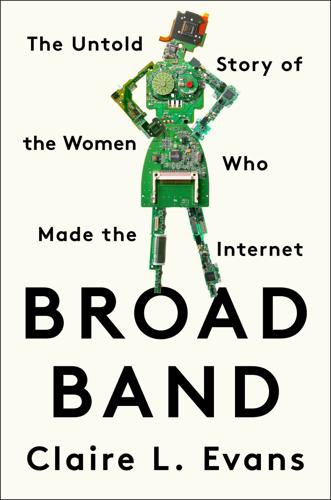
Broad Band: The Untold Story of the Women Who Made the Internet
by
Claire L. Evans
Published 6 Mar 2018

Fancy Bear Goes Phishing: The Dark History of the Information Age, in Five Extraordinary Hacks
by
Scott J. Shapiro
Still, Microsoft’s Chicago used its own proprietary networking protocols, which were incompatible with TCP/IP. While Allard was busy becoming an internet evangelist, the graphical web browser Mosaic was released in 1993. Developed at the National Center for Supercomputing Applications at the University of Illinois, Urbana-Champaign, Mosaic was the first web browser that could display text and images on the same screen. Its point-and-click format was easy to use, reliable, compatible with Microsoft and Apple computers, and—most important of all—free. Even as excitement about the World Wide Web was sweeping the world, Microsoft was uninterested.

Computer: A History of the Information Machine
by
Martin Campbell-Kelly
and
Nathan Ensmenger
Published 29 Jul 2013

Machines of Loving Grace: The Quest for Common Ground Between Humans and Robots
by
John Markoff
Published 24 Aug 2015
Since bandwidth would still be slow and screens would still be small, the companies that tried to compete with Apple would have to look for any competitive advantage they could find. They were planning a start-up and so they began looking for a technical cofounder, but they also needed an outsider to assess the technology. That search led them to Tom Gruber. Cheyer and Kittlaus prepared a simple demo that appeared in Mosaic, the first Web browser, for Gruber. Users could type a question into a search box and it would respond. At the outset he was skeptical. “I’ve seen this before, you guys are trying to boil the ocean,” he told Cheyer. The program seemed like a search engine, but then Cheyer began to reveal all the AI components they had integrated into the machine.

Mobile First
by
Luke Wroblewski
Published 4 Oct 2011

The Innovators: How a Group of Inventors, Hackers, Geniuses and Geeks Created the Digital Revolution
by
Walter Isaacson
Published 6 Oct 2014
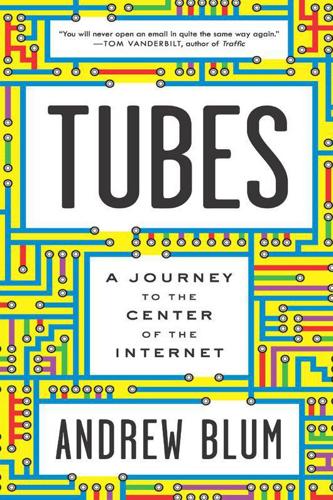
Tubes: A Journey to the Center of the Internet
by
Andrew Blum
Published 28 May 2012
Yet it was that spending, as overheated and economically destructive as it was, that built the Internet we use today. In 1994, I was finishing high school, logging long hours on the family Macintosh, endlessly tying up the phone exploring the message boards and chat rooms of America Online. Then sometime that winter my father brought home a small 3.5-inch disk loaded with a new program called “Mosaic”—the first web browser. On a sunny weekend morning, sitting at the dining room table, my physics homework pushed to the side, a long telephone cord strung across the room, we listened as the screeching tones of the modem signaled a connection with a distant computer. My mother looked disapprovingly over the top of her newspaper.

Fire in the Valley: The Birth and Death of the Personal Computer
by
Michael Swaine
and
Paul Freiberger
Published 19 Oct 2014
Marc Andreessen After cocreating the first visual web browser while a student at the University of Illinois, Andreessen cofounded Netscape. (Courtesy of Netscape Communications Corp.) They coded like mad. Between January and March of 1993, they wrote a 9,000-line program called Mosaic. It was a web browser, but not like Berners-Lee’s. Mosaic was a browser for the GUI generation, a web browser for everyone. It displayed graphics, it let you use a mouse and click on buttons to do things—no, to go places. Mosaic completed the process of turning abstract connection into place; using Mosaic, one had a compelling sense of going from one location to another in some sort of space.

Smart Mobs: The Next Social Revolution
by
Howard Rheingold
Published 24 Dec 2011
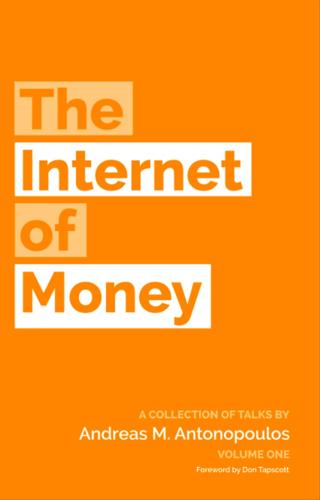
The Internet of Money
by
Andreas M. Antonopoulos
Published 28 Aug 2016

Nerds on Wall Street: Math, Machines and Wired Markets
by
David J. Leinweber
Published 31 Dec 2008
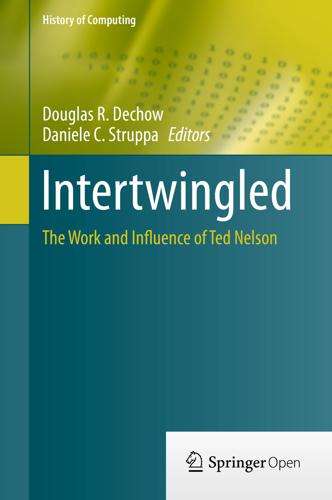
Intertwingled: The Work and Influence of Ted Nelson (History of Computing)
by
Douglas R. Dechow
Published 2 Jul 2015
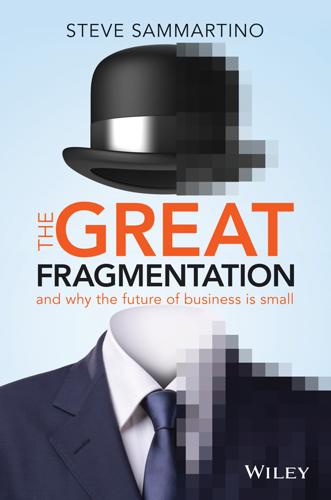
The Great Fragmentation: And Why the Future of All Business Is Small
by
Steve Sammartino
Published 25 Jun 2014
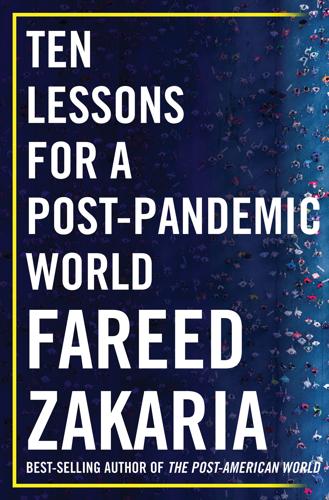
Ten Lessons for a Post-Pandemic World
by
Fareed Zakaria
Published 5 Oct 2020
In the United States, unemployment remained stubbornly high, over 9%. Stock markets in Europe and America reflected these fears. On August 8, “Black Monday,” the Dow Jones Industrial average dropped 635 points, the sixth-largest drop in its history up to that point. It was in this uneasy environment that Marc Andreessen, the inventor of Mosaic, the first major web browser, published an essay in the Wall Street Journal under a perplexing headline: “Why Software Is Eating the World.” By this point, there were really two economies: the digital economy and the material economy. Andreessen’s point was that the digital economy was becoming so powerful that it was dominating—eating up—the material economy.
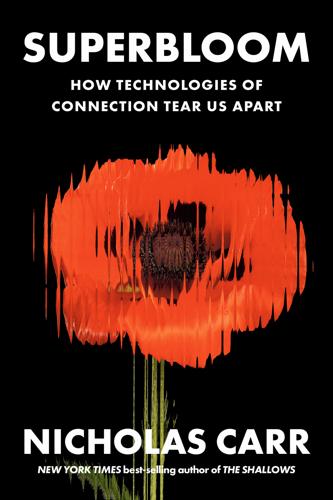
Superbloom: How Technologies of Connection Tear Us Apart
by
Nicholas Carr
Published 28 Jan 2025
Chapter 9 World without World Glorious Substance If the spirit of our time were to take human form, it might well be that of Marc Andreessen, a bear of a man with an immaculately egg-shaped head. He was there at the beginning. In 1993, while an undergraduate at the University of Illinois, he and a friend, backed by government funding, created Mosaic, the first multimedia web browser. Making the net easier to navigate and more interesting to look at, the program drew the masses online. After graduating, Andreessen parlayed Mosaic’s success into the commercial browser company Netscape. Its rapturously received IPO in 1995 kicked off the dot-com craze and put the twenty-four-year-old entrepreneur, sitting barefoot on a throne, on the cover of Time.

The Sharing Economy: The End of Employment and the Rise of Crowd-Based Capitalism
by
Arun Sundararajan
Published 12 May 2016

Designing Search: UX Strategies for Ecommerce Success
by
Greg Nudelman
and
Pabini Gabriel-Petit
Published 8 May 2011

The Stack: On Software and Sovereignty
by
Benjamin H. Bratton
Published 19 Feb 2016
Originally a mathematician and astrophysicist, Smarr is the founding director of Calit2, the California Institute of Telecommunications and Information Technology, the University of California system's flagship IT research institute, in La Jolla. Smarr was also the founder of the National Center for Supercomputing Applications, which among other things brought forth Mosaic, the web browser that became Netscape.26 He is among the key pioneers in cyberinfrastrucure, scientific visualization, and what he calls “planet scale distributed computing.” But as of late, the information platform that has captured his most intense interest is his own body. While QS has many ancestors, Smarr's own quest brings to mind Buckminster Fuller's notebooks, the “Dymaxion File,” in which he recorded his every activity.
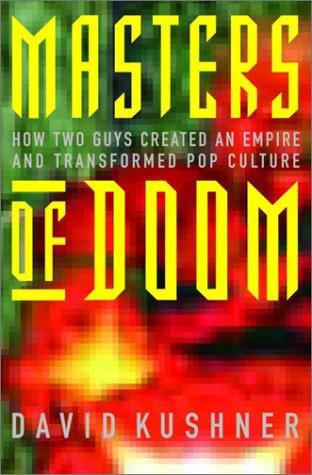
Masters of Doom: How Two Guys Created an Empire and Transformed Pop Culture
by
David Kushner
Published 2 Jan 2003
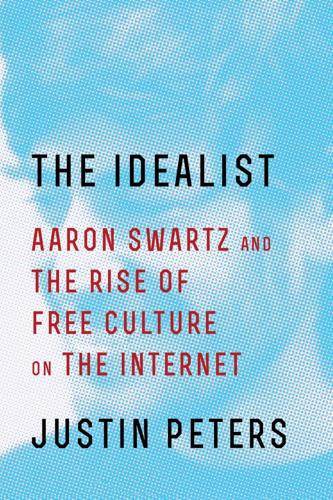
The Idealist: Aaron Swartz and the Rise of Free Culture on the Internet
by
Justin Peters
Published 11 Feb 2013
The World Wide Web was modeled after an actual web, composed of threads—hypertext links—that spun out in all directions, connecting various far-flung nodes, or websites. Like its arachnoid namesake, the Web was good at drawing others in. As more and more people dialed online—especially after the 1993 release of Mosaic, the first visual Web browser—Project Gutenberg grew into an actual project involving more than just Michael Hart and his increasingly weary fingers. As word of the initiative spread, volunteers materialized. “Your project sounds like a wonderful service to mankind and will no doubt increase in value,” wrote a Houston, Texas, man in a 1992 letter to Hart.
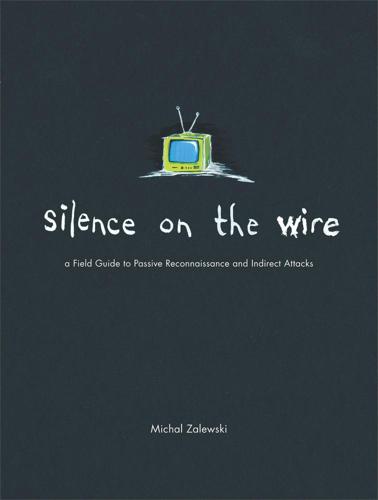
Silence on the Wire: A Field Guide to Passive Reconnaissance and Indirect Attacks
by
Michal Zalewski
Published 4 Apr 2005
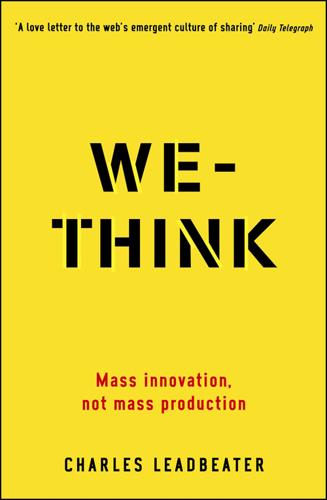
We-Think: Mass Innovation, Not Mass Production
by
Charles Leadbeater
Published 9 Dec 2010
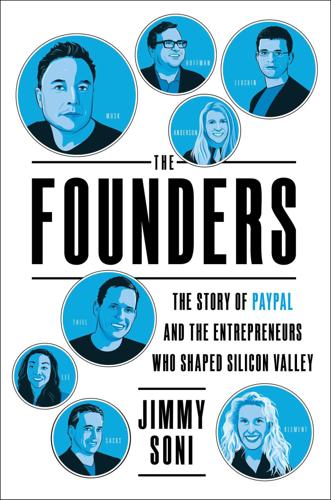
The Founders: The Story of Paypal and the Entrepreneurs Who Shaped Silicon Valley
by
Jimmy Soni
Published 22 Feb 2022
For decades, UIUC researchers pioneered digital technology and built some of the world’s first social networks. And just as Levchin was playacting the foreign arrival, the UIUC-based National Center for Supercomputing Applications (NCSA) announced a new web browser called Mosaic. Among other improvements, Mosaic added graphics to the web and simplified the browser installation process, changes that mainstreamed the internet and accelerated its growth—with UIUC at the center of it all. For freshman Max Levchin, the university’s computing triumphs were notable, but at the time, he sought what all new college students want: belonging and diversion.
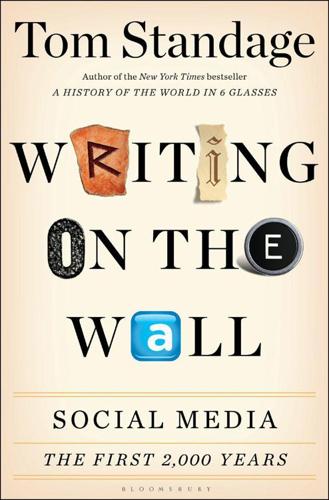
Writing on the Wall: Social Media - the First 2,000 Years
by
Tom Standage
Published 14 Oct 2013
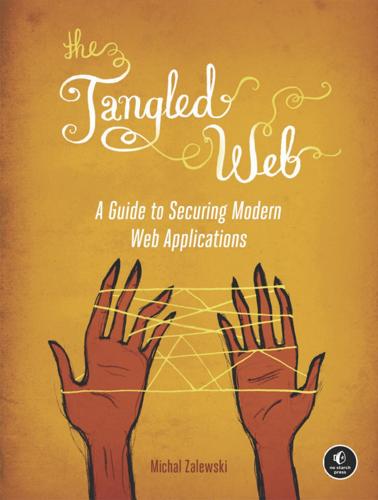
The Tangled Web: A Guide to Securing Modern Web Applications
by
Michal Zalewski
Published 26 Nov 2011
All right, all right, it turned out to be a “hit” by the standards of the mid-1990s. Soon, there were no fewer than dozens of web servers running on the Internet. By 1993, HTTP traffic accounted for 0.1 percent of all bandwidth in the National Science Foundation backbone network. The same year also witnessed the arrival of Mosaic, the first reasonably popular and sophisticated web browser, developed at the University of Illinois. Mosaic extended the original World Wide Web code by adding features such as the ability to embed images in HTML documents and submit user data through forms, thus paving the way for the interactive, multimedia applications of today.
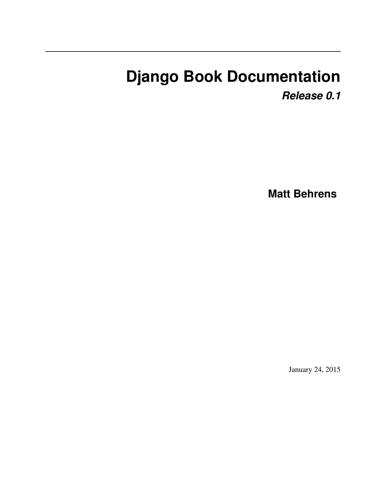
Django Book
by
Matt Behrens
Published 24 Jan 2015
Updating a Web site meant editing HTML; a “redesign” involved redoing every single page, one at a time. As Web sites grew and became more ambitious, it quickly became obvious that that situation was tedious, time-consuming, and ultimately untenable. A group of enterprising hackers at NCSA (the National Center for Supercomputing Applications, where Mosaic, the first graphical Web browser, was developed) solved this problem by letting the Web server spawn external programs that could dynamically generate HTML. They called this protocol the Common Gateway Interface, or CGI, and it changed the Web forever. It’s hard now to imagine what a revelation CGI must have been: instead of treating HTML pages as simple files on disk, CGI allows you to think of your pages as resources generated dynamically on demand.

Crypto: How the Code Rebels Beat the Government Saving Privacy in the Digital Age
by
Steven Levy
Published 15 Jan 2002
If someone created a slick “browser” to surf through the information space created by a multitude of people who shared text, pictures, and sounds on the Web, he said to his colleague Eric Bina, the Internet itself would be easier to use and a better way to get information. The pair, both of whom worked at the Supercomputing Center at the university, created Mosaic, the first great Web browser. Instead of being forced to use arcane commands and tackle a baffling alphabet soup of acronyms, people could now get all sorts of wonderful stuff from handmade Web “pages”—at the click of a mouse! It was an instant phenomenon; to use Mosaic was to swoon with the excitement of participating in a vast experiment with the future of information sharing.

Surveillance Valley: The Rise of the Military-Digital Complex
by
Yasha Levine
Published 6 Feb 2018
Gore’s bill eventually morphed into the High Performance Computing Act of 1991, which provided $495 million for the creation of a high-bandwidth fiber-optic educational computer network and expanded funding for computer and networking research. The act led directly to the creation of Mosaic, the first modern web browser created at the University of Illinois and a legend among early computer start-ups. Mosaic started as a government-funded research project but was immediately spun off by members of the University of Illinois research team as a private company called Netscape. Even more important: Senator Gore’s bill explicitly called for the privatization of the government-funded NSFNET backbone.

Bold: How to Go Big, Create Wealth and Impact the World
by
Peter H. Diamandis
and
Steven Kotler
Published 3 Feb 2015
ARPANET became operational in 1975. It was mostly text-based, fairly complicated to navigate, and used primarily by scientists. All of this changed in 1993, when Marc Andreessen, a twenty-two-year-old undergraduate student at the University of Illinois, Urbana-Champaign, coauthored Mosaic—both the very first web browser and the Internet’s first user-friendly user interface.5 Mosaic unlocked the Internet. By adding in graphics and replacing Unix with Windows—the operating system that was then running nearly 80 percent of the computers in the world—Andreessen mainstreamed a technology developed for scientists, engineers, and the military.
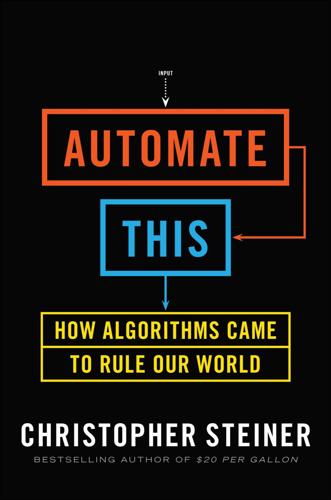
Automate This: How Algorithms Came to Rule Our World
by
Christopher Steiner
Published 29 Aug 2012

CSS: The Definitive Guide
by
Eric A. Meyer
Published 2 Jan 2006

The Rise and Fall of the Neoliberal Order: America and the World in the Free Market Era
by
Gary Gerstle
Published 14 Oct 2022
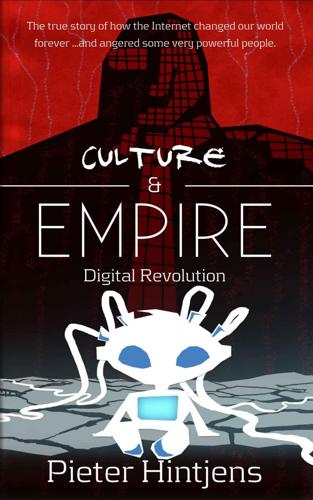
Culture & Empire: Digital Revolution
by
Pieter Hintjens
Published 11 Mar 2013
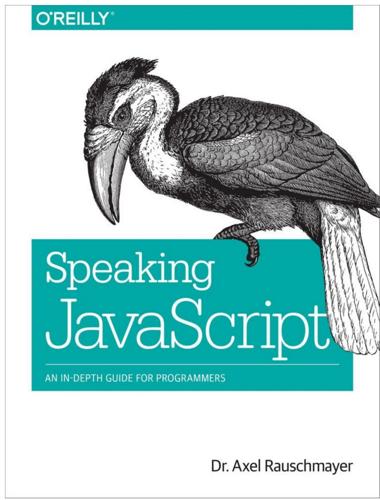
Speaking JavaScript: An In-Depth Guide for Programmers
by
Axel Rauschmayer
Published 25 Feb 2014
Programming languages that influenced JavaScript. * * * [1] Brendan Eich, “A Brief History of JavaScript,” July 21, 2010, http://bit.ly/1lKkI0M. Chapter 4. How JavaScript Was Created Knowing why and how JavaScript was created helps us understand why it is the way it is. In 1993, NCSA’s Mosaic was the first widely popular web browser. In 1994, a company called Netscape was founded to exploit the potential of the nascent World Wide Web. Netscape created the proprietary web browser Netscape Navigator, which was dominant throughout the 1990s. Many of the original Mosaic authors went on to work on Navigator, but the two intentionally shared no code.
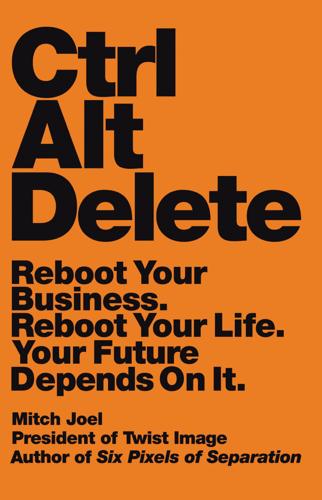
Ctrl Alt Delete: Reboot Your Business. Reboot Your Life. Your Future Depends on It.
by
Mitch Joel
Published 20 May 2013

Reinventing Capitalism in the Age of Big Data
by
Viktor Mayer-Schönberger
and
Thomas Ramge
Published 27 Feb 2018
There is a far more radical alternative measure being put forward, in the form of universal basic income. UBI, as it is affectionately called by its proponents, has garnered surprising support, particularly among leading figures in the high-tech sector. “Superangel” investor Marc Andreessen, the coauthor of Mosaic, one of the first widely used Web browsers, is in favor of it. And so are New York–based Albert Wenger, another highly successful venture capitalist; start-up incubator impresario Sam Altman; and Elon Musk, the brash but congenial cofounder of PayPal and CEO of Tesla. Silicon Valley isn’t alone in its enthusiasm for UBI, but it is Silicon Valley’s digital and data-driven innovations that have given rise to the idea.

Dreaming in Code: Two Dozen Programmers, Three Years, 4,732 Bugs, and One Quest for Transcendent Software
by
Scott Rosenberg
Published 2 Jan 2006
Montulli and his pal Aleks Totic had seen the Slashdot article about OSAF; soon after, they got in touch with Kapor to talk about volunteering on Chandler. Both young men were famous in Web circles: Totic had been part of the group at the University of Illinois, Urbana-Champaign, that built Mosaic, the first popular graphic Web browser (he had written the Macintosh version), and then decamped with his colleagues for Silicon Valley as part of the founding team at Netscape in 1994. Montulli had written a very early text-only Web browser while a student at the University of Kansas and had also been recruited to join Netscape’s start-up crew.
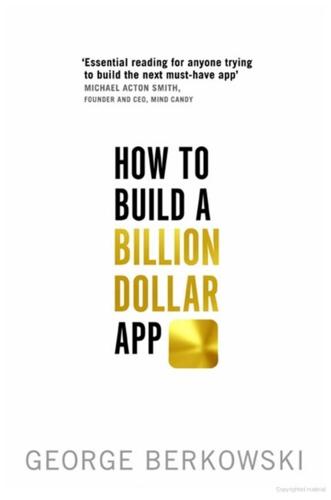
How to Build a Billion Dollar App: Discover the Secrets of the Most Successful Entrepreneurs of Our Time
by
George Berkowski
Published 3 Sep 2014
If you hit the product–market fit faster, then you could be a lot bigger than that. Whatever happens, it’s going to be a big transformation. Chapter 14 Make Something People Love ‘The life of any startup can be divided into two parts – before product–market fit and after product–market fit’ #BILLIONDOLLARAPP Marc Andreessen was the co-creator of Mosaic, the first widely used Web browser; he was cofounder of Netscape; he is the cofounder and general partner of Silicon Valley venture capital firm Andreessen Horowitz. He sits on the board of directors of Facebook, eBay and HP, among others. He’s a pretty smart guy who knows a thing or two about tech. Andreessen explains on his blog,1 ‘… the life of any startup can be divided into two parts – before product–market fit (BPMF) and after product–market fit (APMF).’
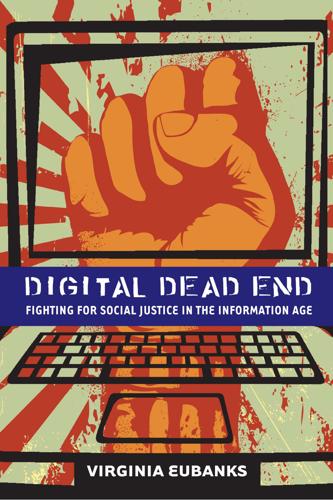
Digital Dead End: Fighting for Social Justice in the Information Age
by
Virginia Eubanks
Published 1 Feb 2011
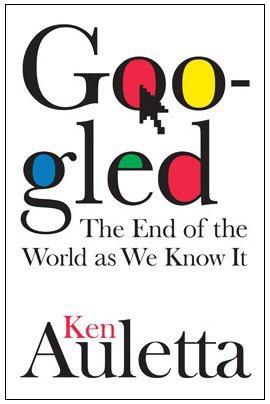
Googled: The End of the World as We Know It
by
Ken Auletta
Published 1 Jan 2009

From Counterculture to Cyberculture: Stewart Brand, the Whole Earth Network, and the Rise of Digital Utopianism
by
Fred Turner
Published 31 Aug 2006

Tools of Titans: The Tactics, Routines, and Habits of Billionaires, Icons, and World-Class Performers
by
Timothy Ferriss
Published 6 Dec 2016

Internet for the People: The Fight for Our Digital Future
by
Ben Tarnoff
Published 13 Jun 2022
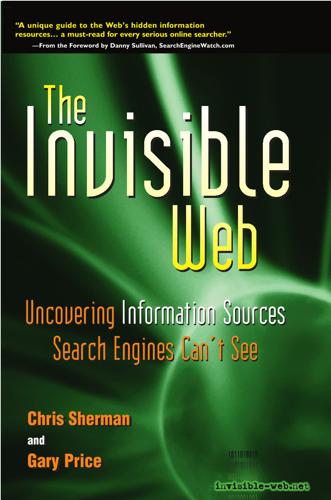
The Invisible Web: Uncovering Information Sources Search Engines Can't See
by
Gary Price
,
Chris Sherman
and
Danny Sullivan
Published 2 Jan 2003
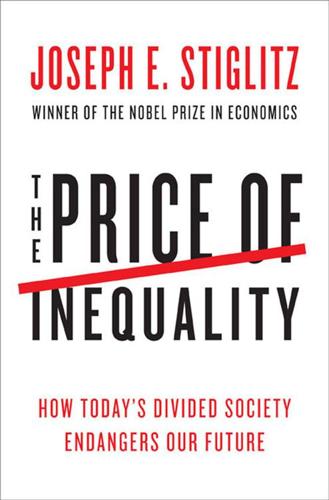
The Price of Inequality: How Today's Divided Society Endangers Our Future
by
Joseph E. Stiglitz
Published 10 Jun 2012
I thought the evidence that American Airlines had engaged in predatory behavior was especially compelling, but the judge didn’t need to look at the evidence: the Supreme Court had ruled that there was just too strong a presumption against the existence of predatory pricing to make prosecution possible. 35. One of Netscape’s founders, Marc Andreessen, was part of the team at the University of Illinois at Urbana-Champaign that developed Mosaic, the first widely used web browser, which was a project of the university’s National Center for Supercomputing Applications (one of the original sites of the National Science Foundation’s Supercomputer Centers Program). See the website of the NCSA, http://www.ncsa.illinois.edu/Projects/mosaic.html (accessed March 3, 2012); and John Markoff, “New Venture in Cyberspace by Silicon Graphics Founder,” New York Times, May 7, 1994, available at http://www.nytimes.com/1994/05/07/business/new-venture-in-cyberspace-by-silicon-graphics-founder.html?

Eloquent JavaScript: A Modern Introduction to Programming
by
Marijn Haverbeke
Published 15 Nov 2018
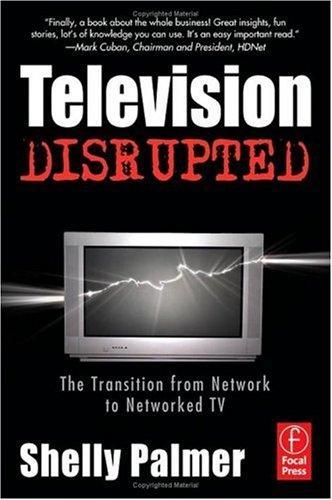
Television disrupted: the transition from network to networked TV
by
Shelly Palmer
Published 14 Apr 2006
In 1989, Tim Berners-Lee and a group of other big brains at the European Laboratory for Particle Physics (usually referred to as CERN) proposed the protocol that we now know as HTTP (Hypertext Transfer Protocol) and in 1991 the first World Wide Web pages or Web sites were put online using HTML (Hypertext Markup Language) which is still an extremely popular language for the creation of Web pages. In 1993, Marc Andreessen and his soon-to-be-extraordinarily-rich teammates at the National Center for Supercomputing Applications (NCSA) launched a browser called Mosaic (ultimately Netscape), which became the most popular Web browser until Bill Gates woke up and realized that Microsoft totally missed the evolution of the Internet and the World Wide Web. It didn’t take Microsoft very long to corner the browser market with Internet Explorer, which is still the most popular browser in the world today.
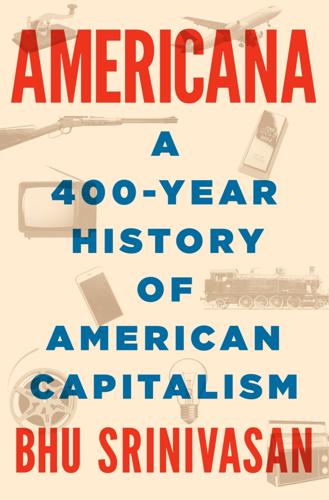
Americana: A 400-Year History of American Capitalism
by
Bhu Srinivasan
Published 25 Sep 2017

Americana
by
Bhu Srinivasan

The 4-Hour Chef: The Simple Path to Cooking Like a Pro, Learning Anything, and Living the Good Life
by
Timothy Ferriss
Published 1 Jan 2012
Then, one night in 2011, Marc Andreessen introduced me to a series of winners over dinner. At the time, his kitchen featured a walk-in whiskey library stocked with a fit for every palate, each scored from 1–4 (4 being best). If you’ve ever used the Internet, you probably have Marc to thank. Coauthor of Mosaic, the first widely used web browser, Marc has a résumé that’s something else: cofounder of Netscape Communications (acquired by AOL for $4.2 billion), chairman of Opsware (acquired by HP for $1.6 billion), board member at Facebook, eBay, and much more. He also knows his whiskeys. I asked Marc to kindly share his top four picks that aren’t impossible to find, and here they are, in his words: 1.
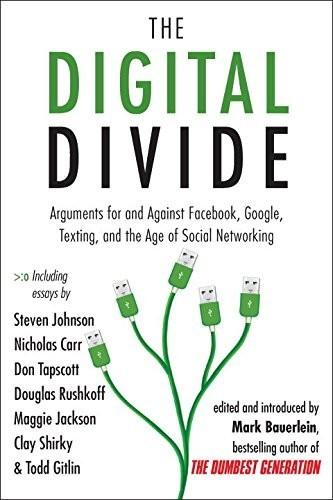
The Digital Divide: Arguments for and Against Facebook, Google, Texting, and the Age of Social Netwo Rking
by
Mark Bauerlein
Published 7 Sep 2011
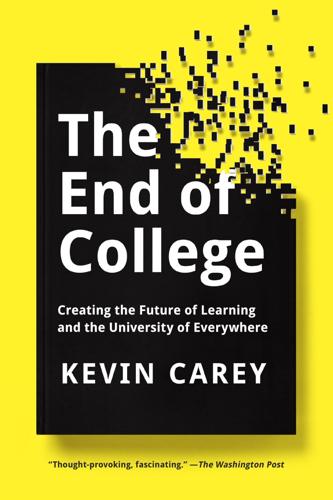
The End of College: Creating the Future of Learning and the University of Everywhere
by
Kevin Carey
Published 3 Mar 2015

The Relentless Revolution: A History of Capitalism
by
Joyce Appleby
Published 22 Dec 2009

The Costs of Connection: How Data Is Colonizing Human Life and Appropriating It for Capitalism
by
Nick Couldry
and
Ulises A. Mejias
Published 19 Aug 2019

The Rise of the Network Society
by
Manuel Castells
Published 31 Aug 1996
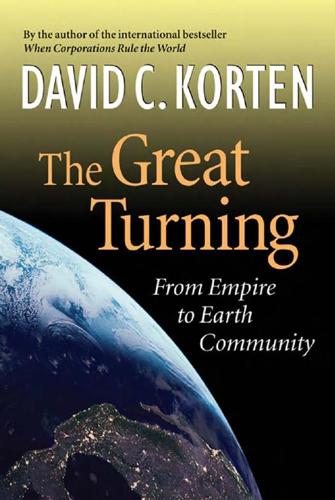
The Great Turning: From Empire to Earth Community
by
David C. Korten
Published 1 Jan 2001
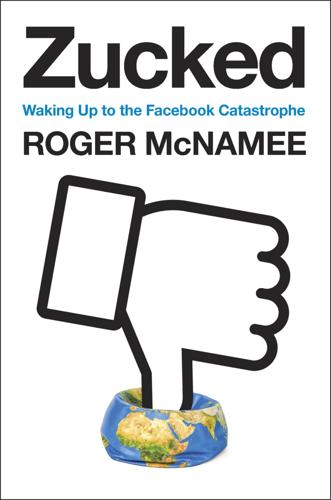
Zucked: Waking Up to the Facebook Catastrophe
by
Roger McNamee
Published 1 Jan 2019

The Wires of War: Technology and the Global Struggle for Power
by
Jacob Helberg
Published 11 Oct 2021
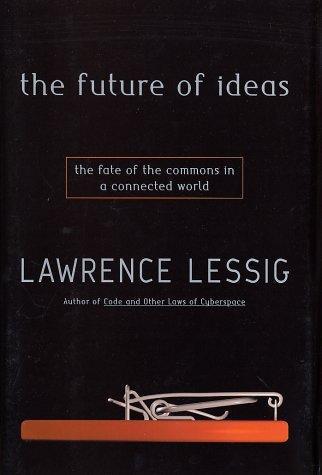
The Future of Ideas: The Fate of the Commons in a Connected World
by
Lawrence Lessig
Published 14 Jul 2001
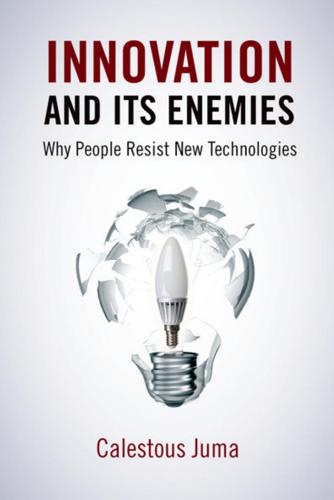
Innovation and Its Enemies
by
Calestous Juma
Published 20 Mar 2017

More Everything Forever: AI Overlords, Space Empires, and Silicon Valley's Crusade to Control the Fate of Humanity
by
Adam Becker
Published 14 Jun 2025
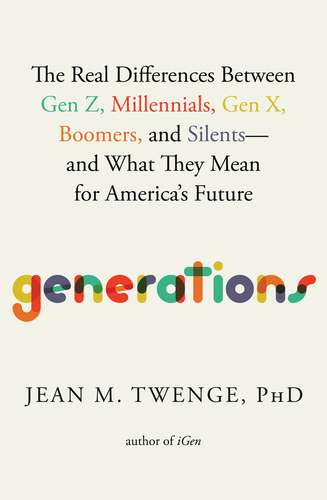
Generations: The Real Differences Between Gen Z, Millennials, Gen X, Boomers, and Silents—and What They Mean for America's Future
by
Jean M. Twenge
Published 25 Apr 2023
In the 2020s, it’s hard to remember a time when YouTube didn’t exist. Of course, sites like YouTube couldn’t exist without the internet—and Gen X was there from the beginning. Gen X’er Marc Andreessen (b. 1971), then a graduate student at the University of Illinois, wrote Mosaic (later called Netscape), the first widely used web browser, in 1993. Jerry Yang (b. 1968) and David Filo (b. 1966) founded Yahoo!, the internet search engine of the 1990s—which was soon replaced by Google, founded in 1999 by Larry Page (b. 1973) and Sergey Brin (b. 1973). In short, many of the foundational websites and technologies we use today were invented by Gen X.
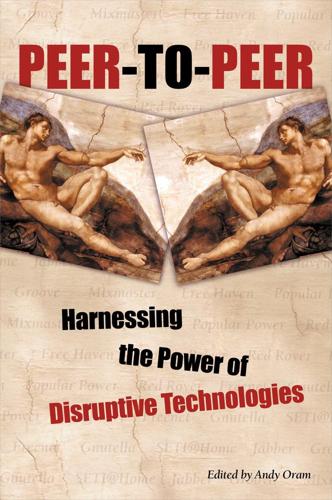
Peer-to-Peer
by
Andy Oram
Published 26 Feb 2001
Machines were assumed to be always on, always connected, and assigned permanent IP addresses. DNS was designed for this environment, in which a change in IP address was assumed to be abnormal and rare, and could take days to propagate through the system. With the invention of Mosaic, another model began to spread. To run a web browser, a PC needed to be connected to the Internet over a modem, with its own IP address. This created a second class of connectivity, because PCs entered and left the network cloud frequently and unpredictably. Furthermore, because there were not enough IP addresses available to handle the sudden demand caused by Mosaic, ISPs began to assign IP addresses dynamically.
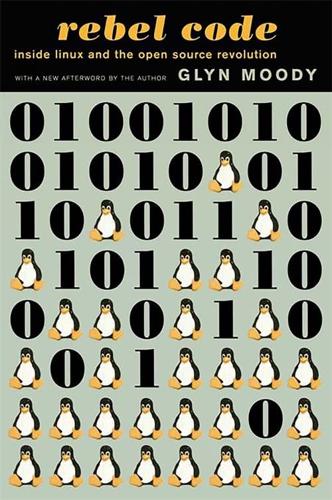
Rebel Code: Linux and the Open Source Revolution
by
Glyn Moody
Published 14 Jul 2002

The Age of Surveillance Capitalism
by
Shoshana Zuboff
Published 15 Jan 2019